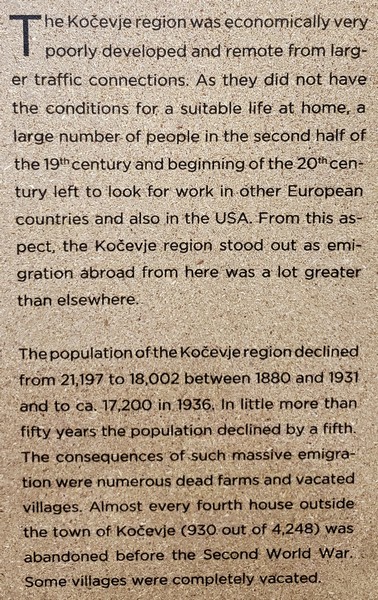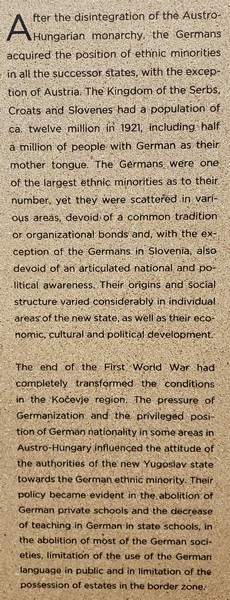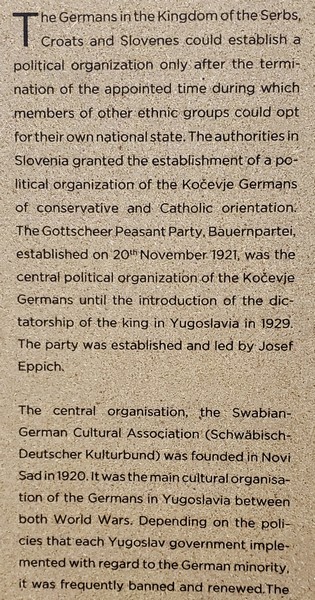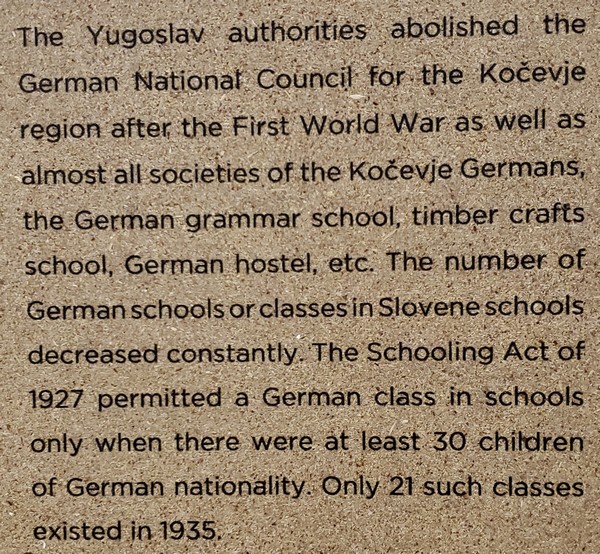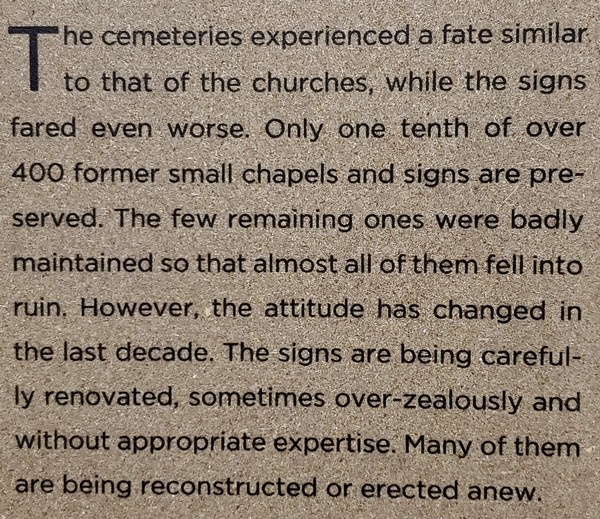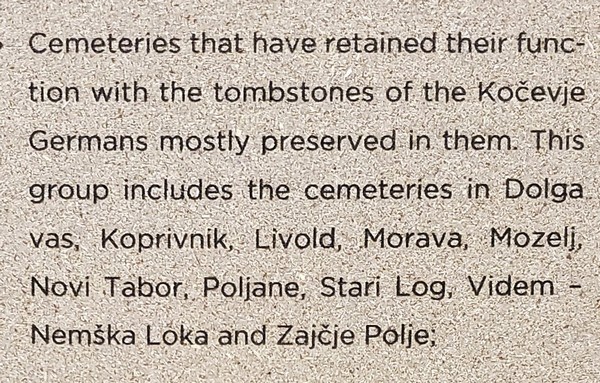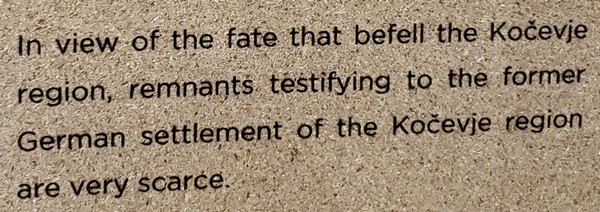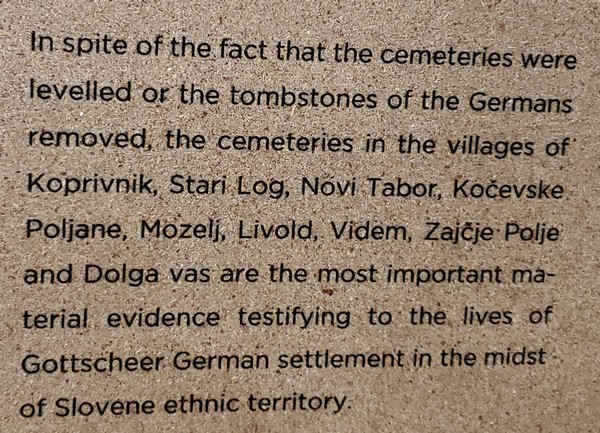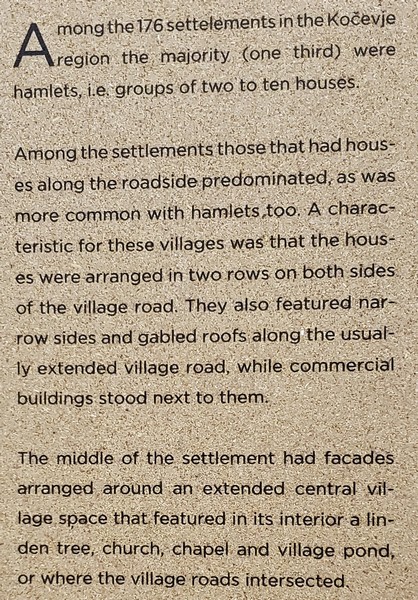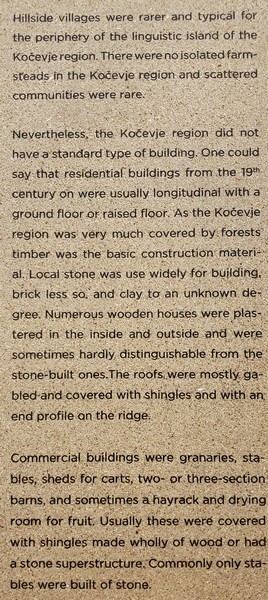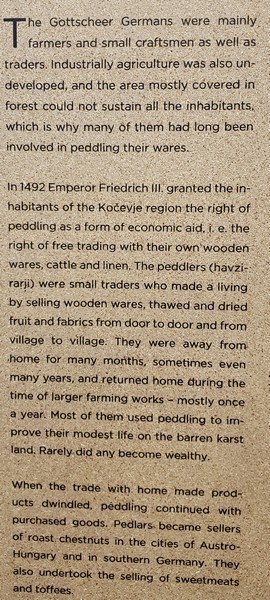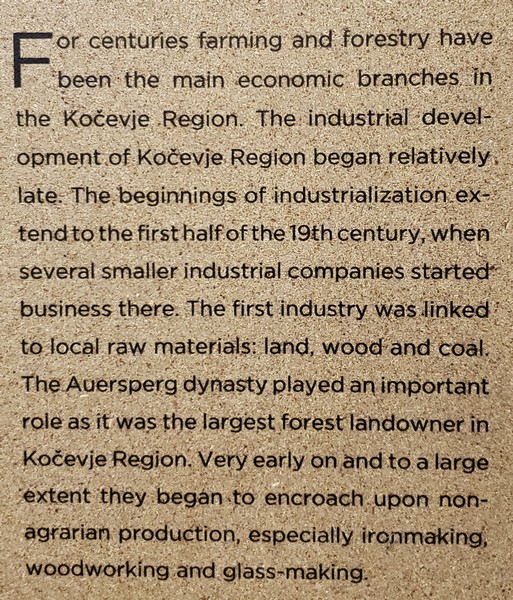Ahiohill, Ireland
John Donovan was born here in 1814 and left around 1847.
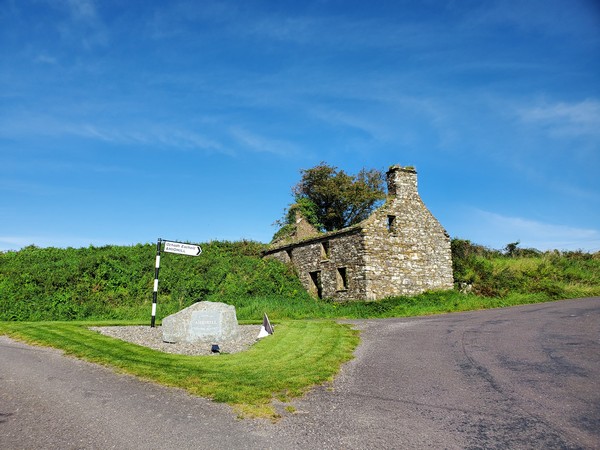
Entrance to Ahiohill (Ah hee OHL)
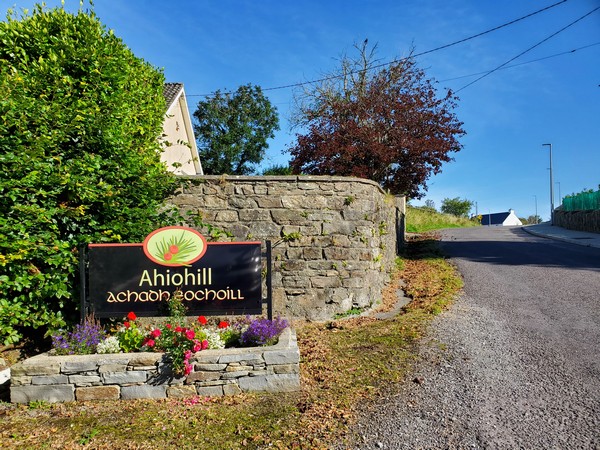
Ahiohill entrance. In Irish, the town name is "Achadh Eochaille," meaning "field of the yew." The historical spelling for the area is Aghyohil.
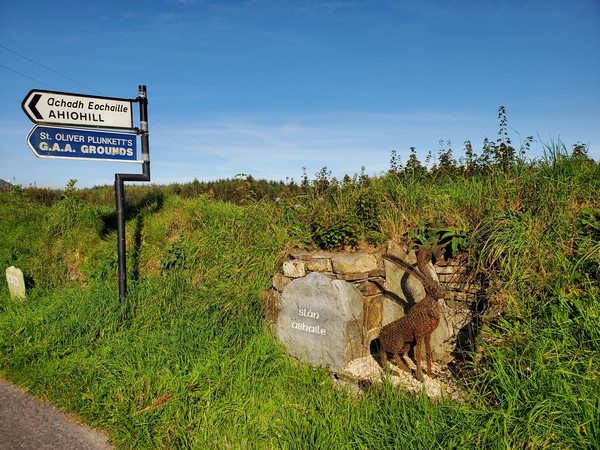
Slán abhaile is an Irish language phrase used to bid goodbye to someone who is travelling home. A literal translation of the phrase is "safe home." "The hare was a sacred and mystical animal to the Celts; a symbol of abundance, prosperity and good fortune. They were believed to have connections to the Otherworld. They were treated with great respect and never eaten."
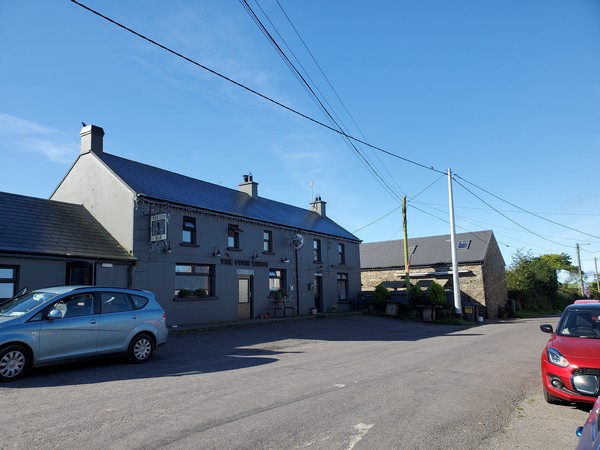
The Four Winds pub in the tiny town of Ahiohill.
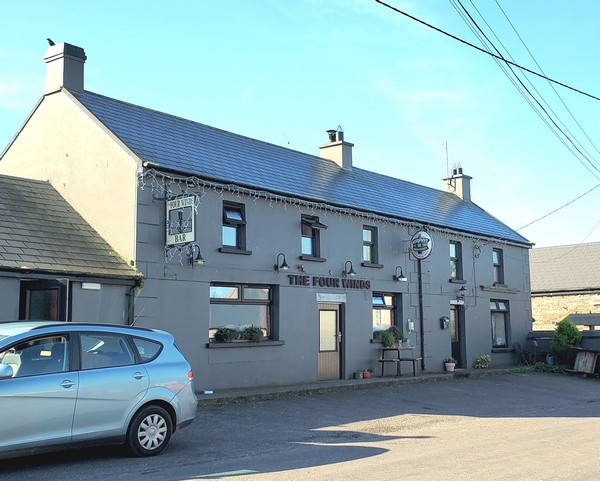
The pub was closed (everyone was at the Harvest Fair), so I couldn't go inside.
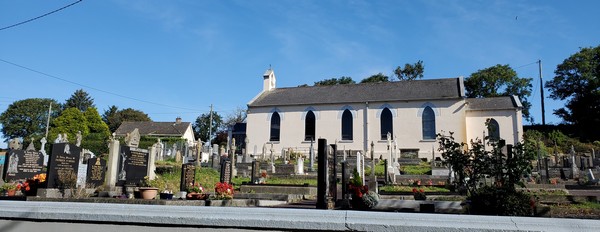
Ahiohill church and cemetery
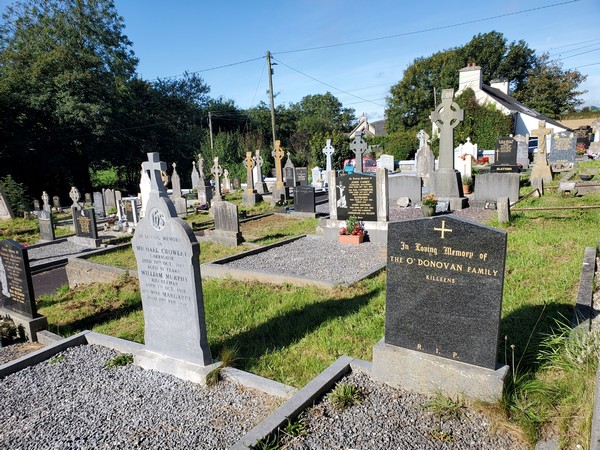
Ahiohill cemetery with O'Donovan headstone (Donovan is a very common name in West Cork).

Field on the edge of Ahiohill
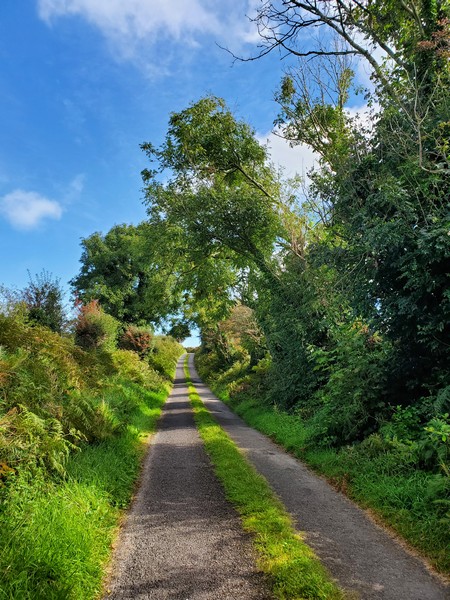
Farm road in Ahiohill
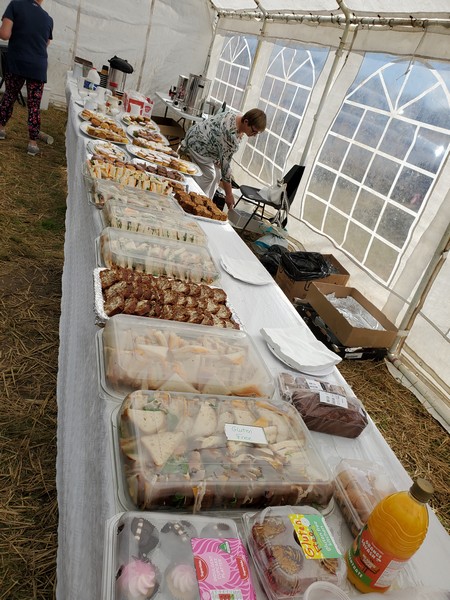
"Tea tent" (sandwiches and baked goods) at the Harvest Fair. By donation.
Kusel, Germany
Julius Gras was born nearby in 1878 and left for America in 1899 at age 21.
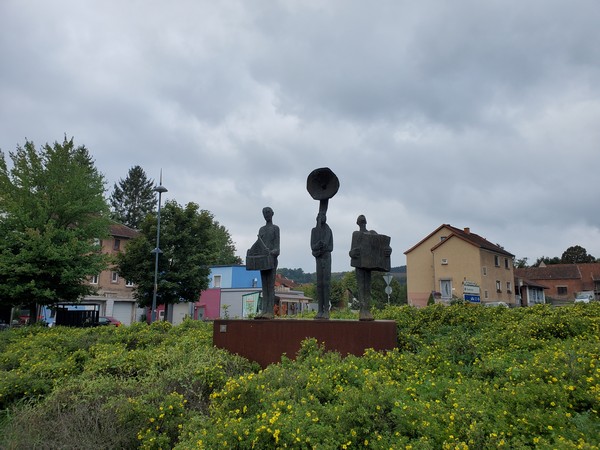
Musician statue. This area was known as Musician Land, and traveling musical groups from here became famous all over the world.
Buildings in the old center of Kusel
I don't know the ages of these buildings, but I'm sure many of them were standing when Julius lived here.
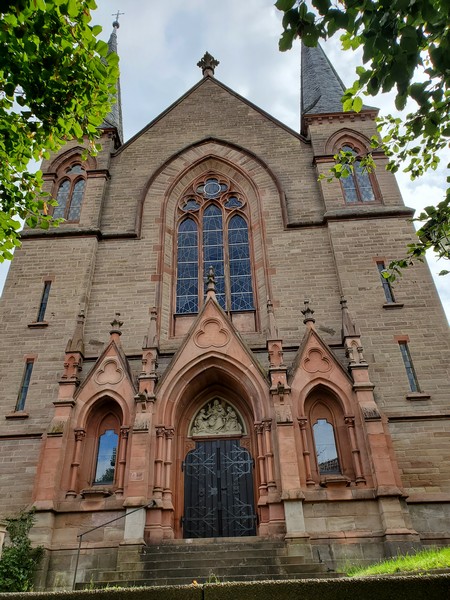
Saint Giles’s Catholic Parish Church (Pfarrkirche St. Ägidius) was completed in 1889, 10 years before Julius left.
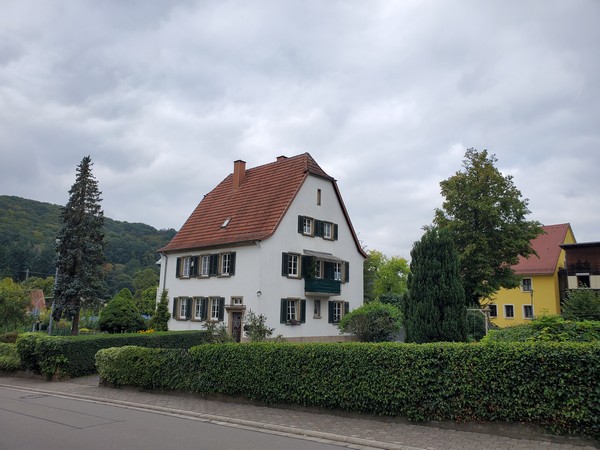
Kusel
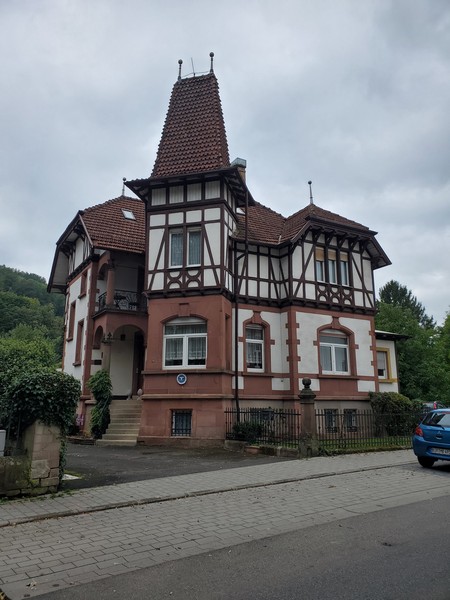
Kusel
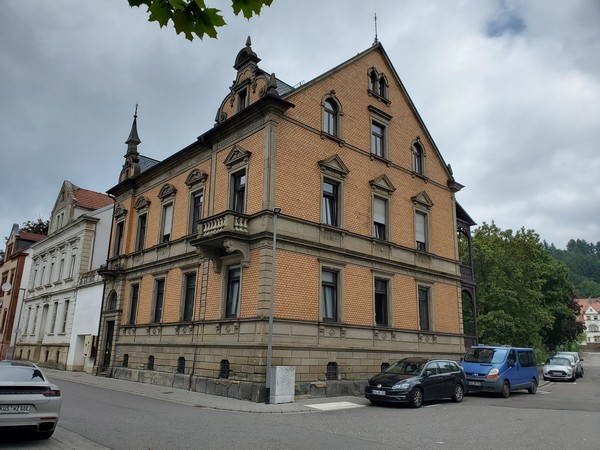
Kusel

Kusel
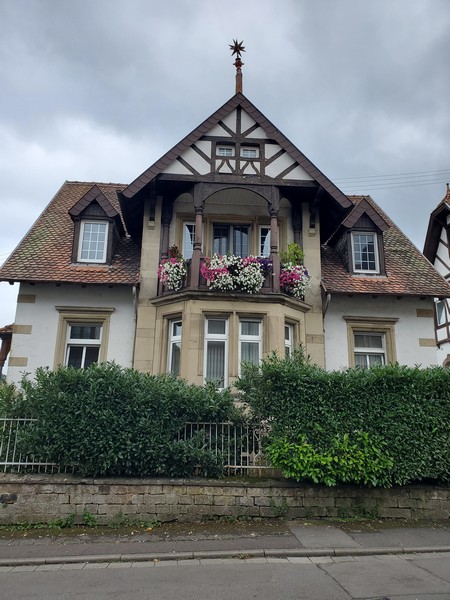
Kusel
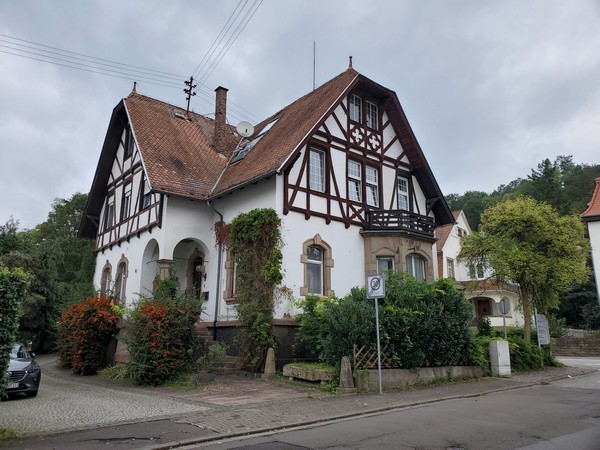
Kusel
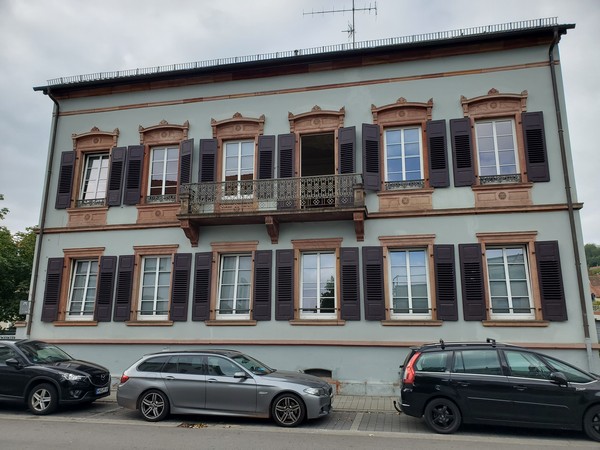
Kusel
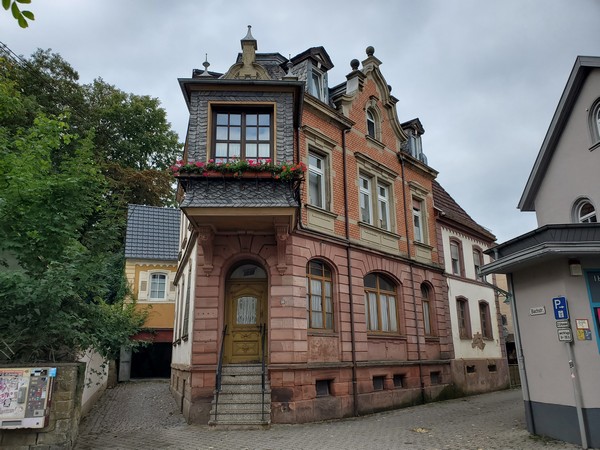
Kusel
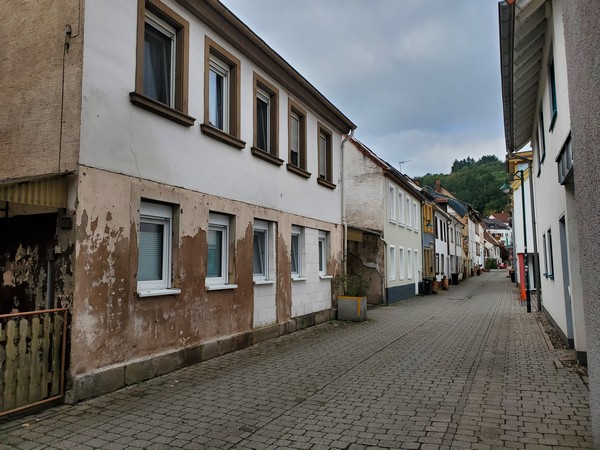
Kusel
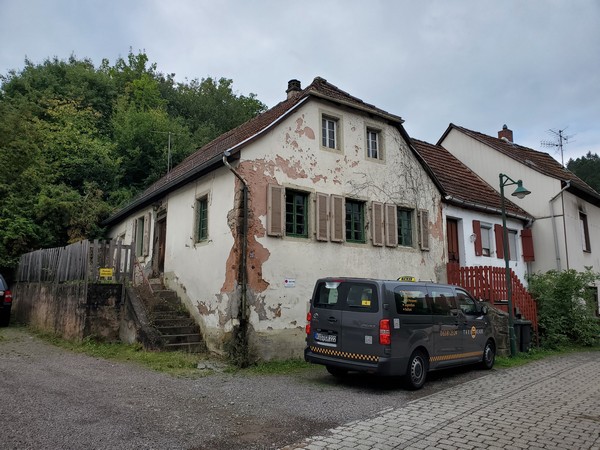
Kusel
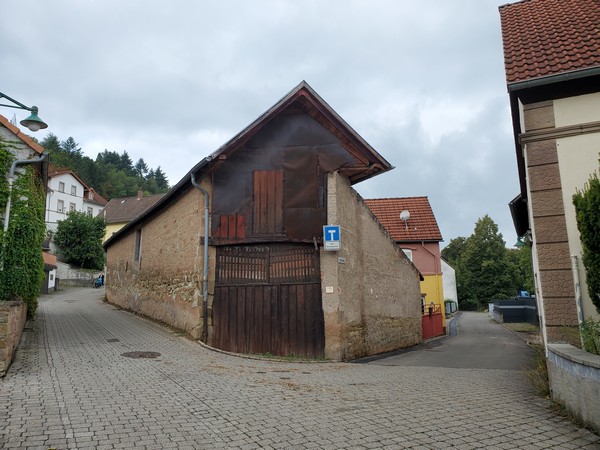
Kusel
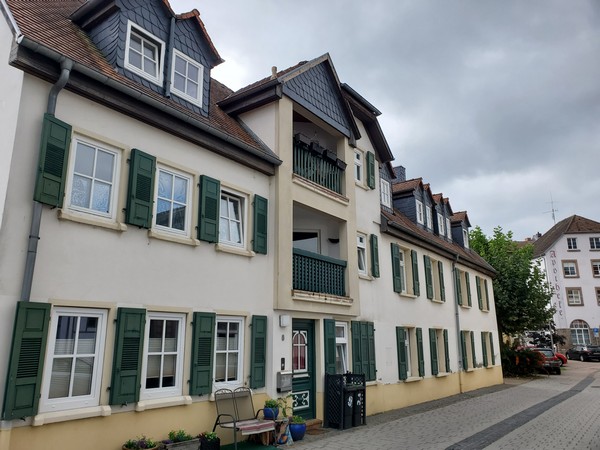
Kusel
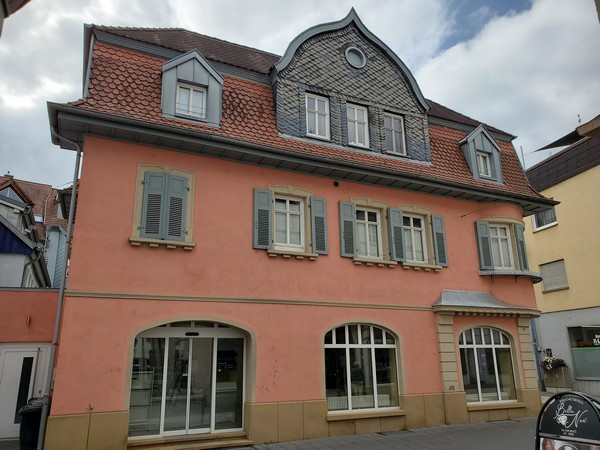
Kusel
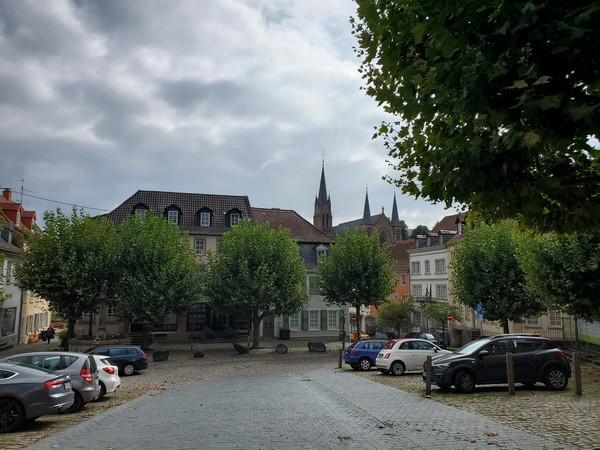
Kusel
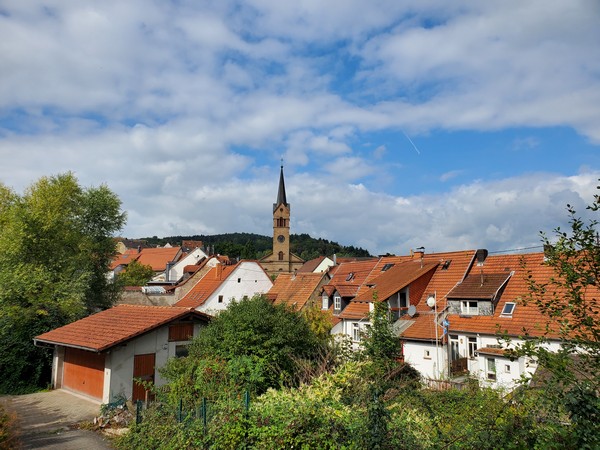
Kusel
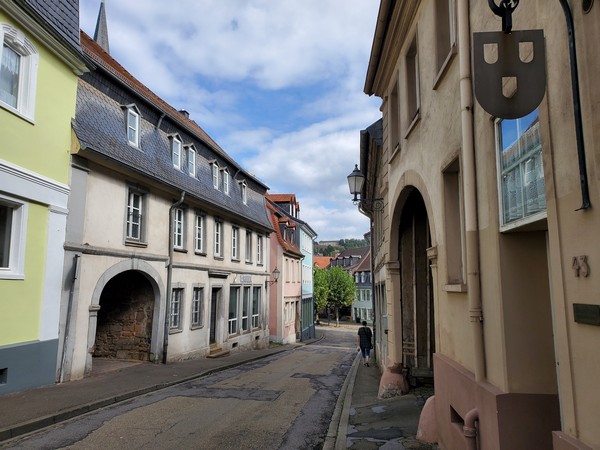
Kusel
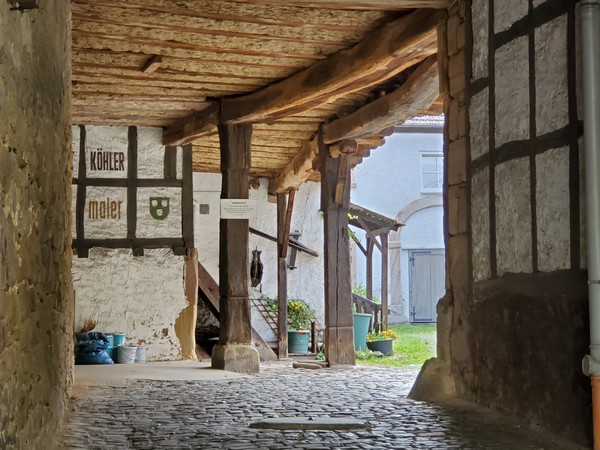
This building looks old. I love the big timbers.
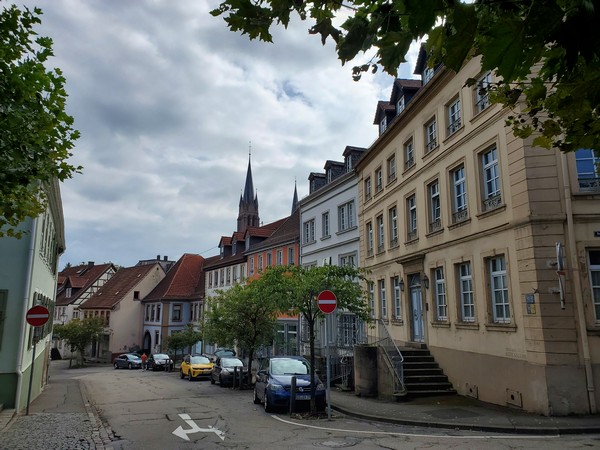
Kusel
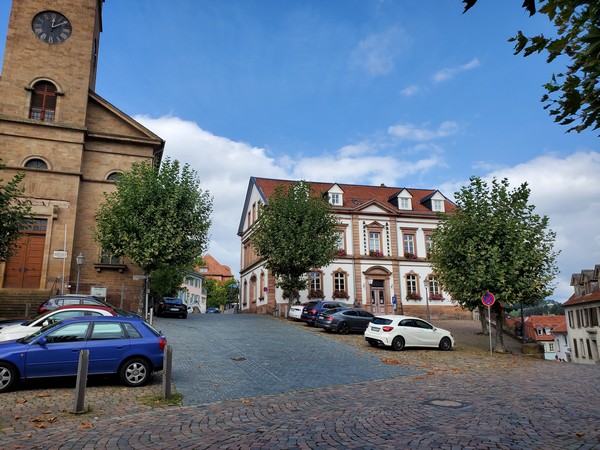
Rathouse (town hall) and Protestant church
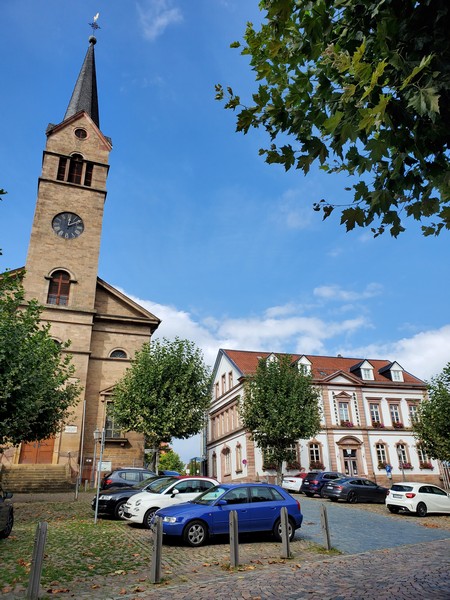
Rathouse (town hall) and Protestant church
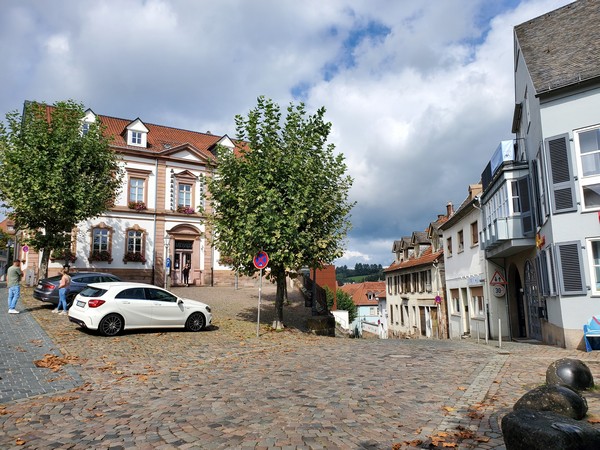
Rathouse (town hall)
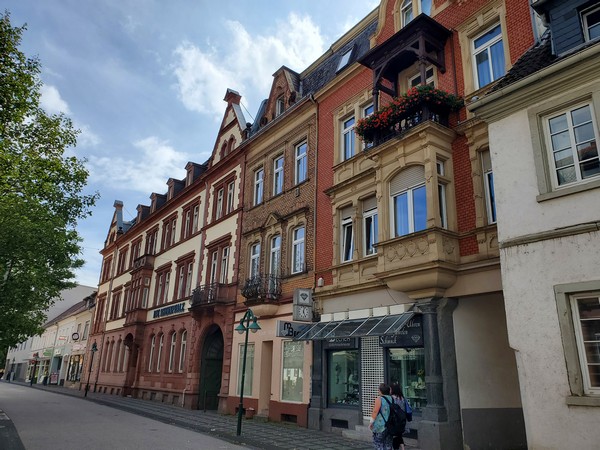
Kusel
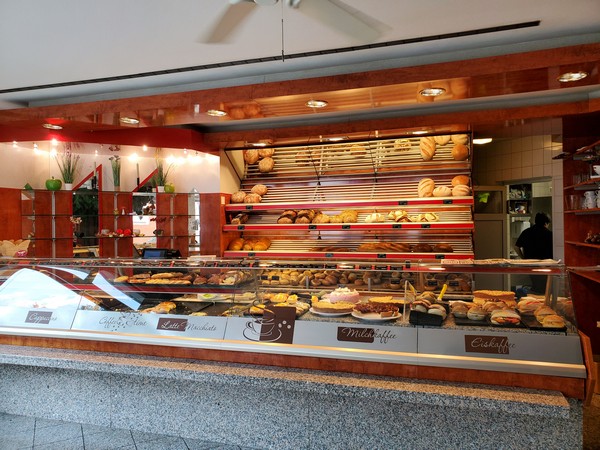
Kusel bakery (breads, pastries, sandwiches)
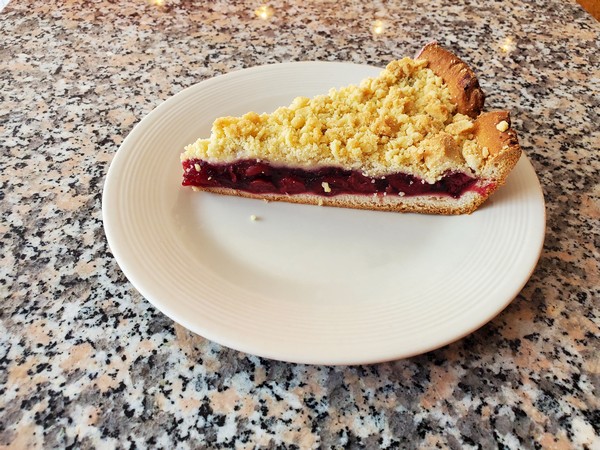
Cherry streusel
Rammelsbach, Germany
This town is just a mile from Kusel. Julius Gras was born here in 1878 and left for America in 1899 at age 21. "Bach" means brook, or creek. It once had a big limestone quarry. Now it's a bedroom community of about 1400 people.
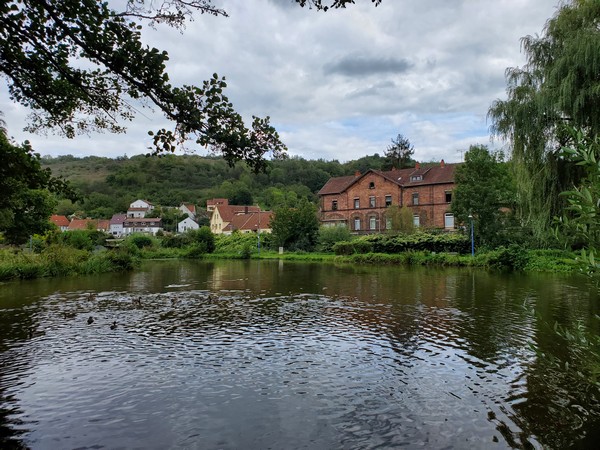
The pond was built after Julius left. The train station opened for passengers in 1898, the year before Julius left.
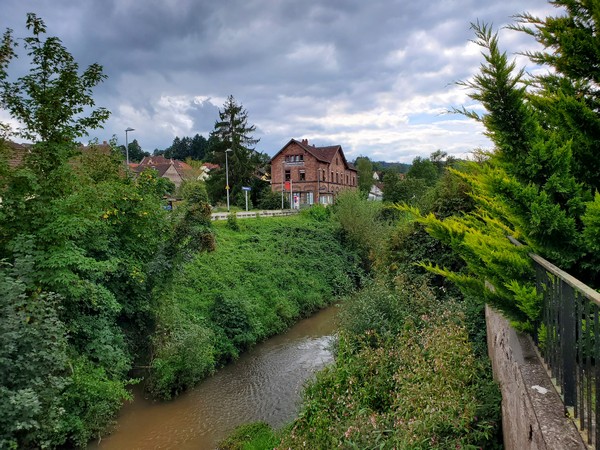
Train station
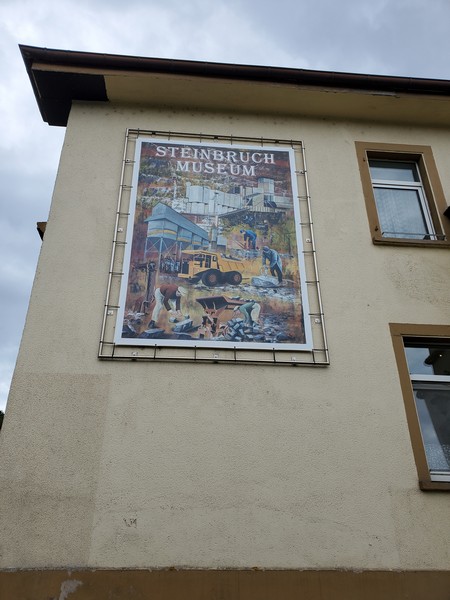
"Museum about the origin and development of the former largest limestone quarry in Germany. After the great stone quarry was opened in 1868, the village began growing rather quickly. About 1888, new houses sprang up on the old village street leading to the bridge, and even beyond the bridge all the way to the road running through the Kuselbach valley." (The museum was closed when I was there.)
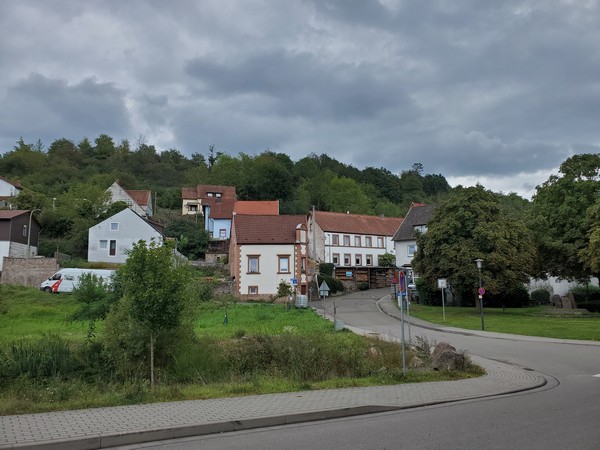
Houses in the center of Rammelsbach
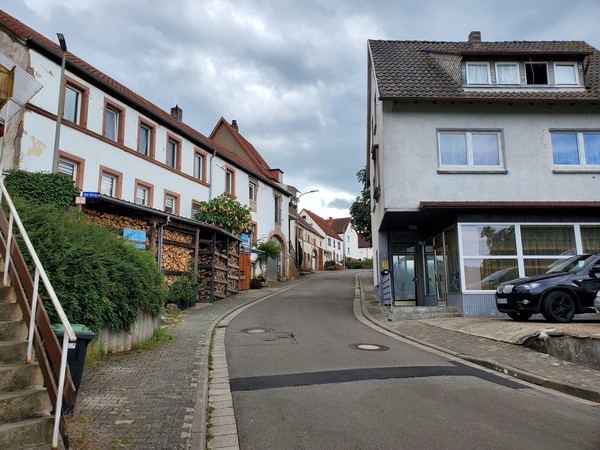
Walking up the hill from the center of Rammelsbach
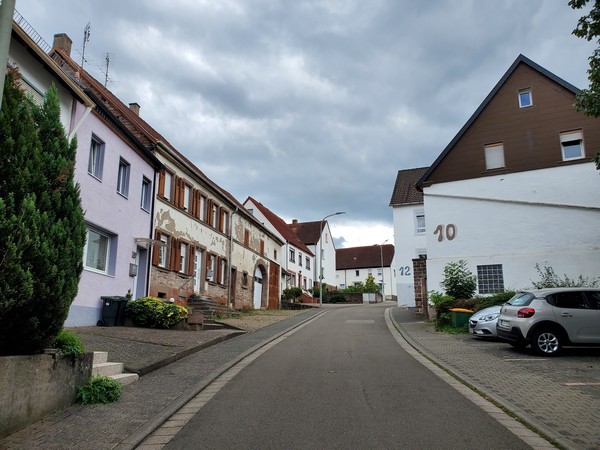
Walking up the hill from the center of Rammelsbach
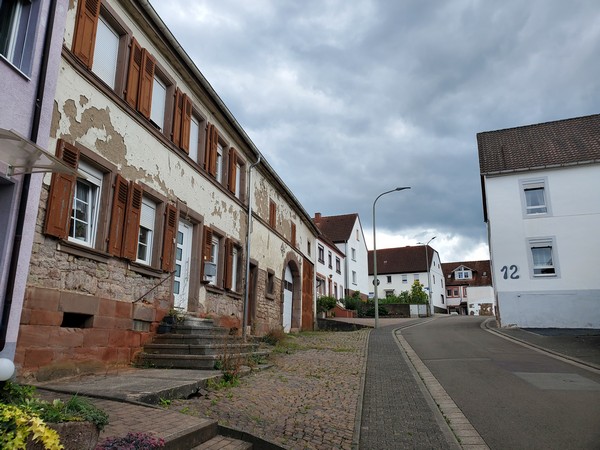
Walking up the hill from the center of Rammelsbach
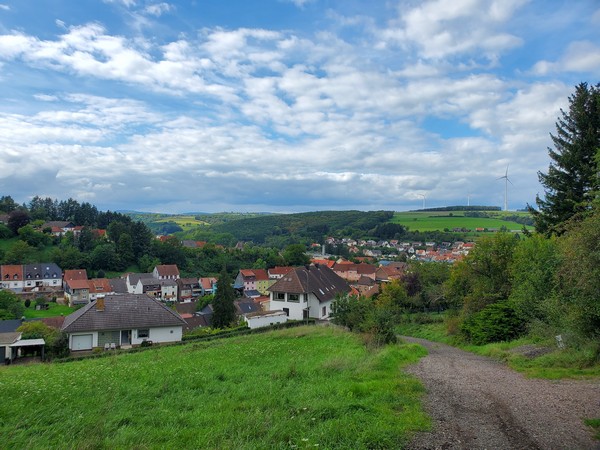
Rammelsbach
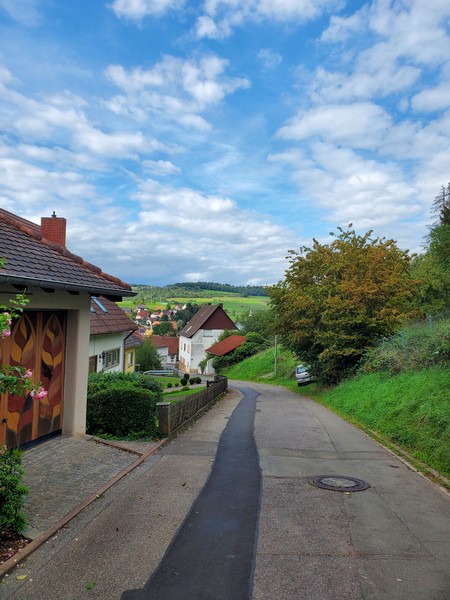
Rammelsbach, road going up the hill
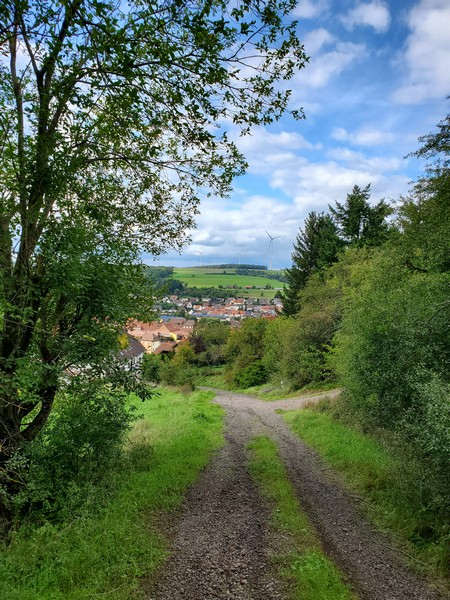
The road becomes dirt. View of Rammelsbach valley
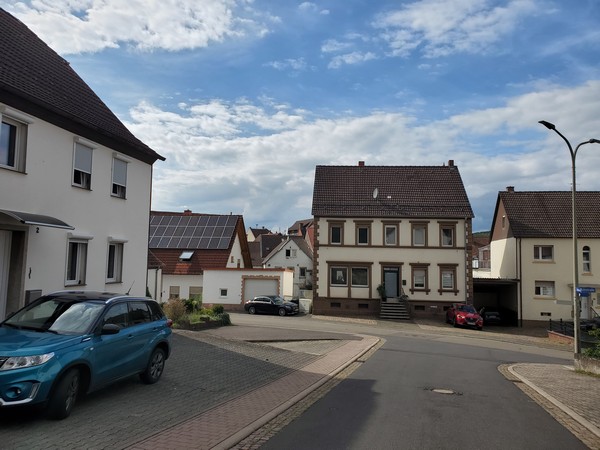
Rammelsbach
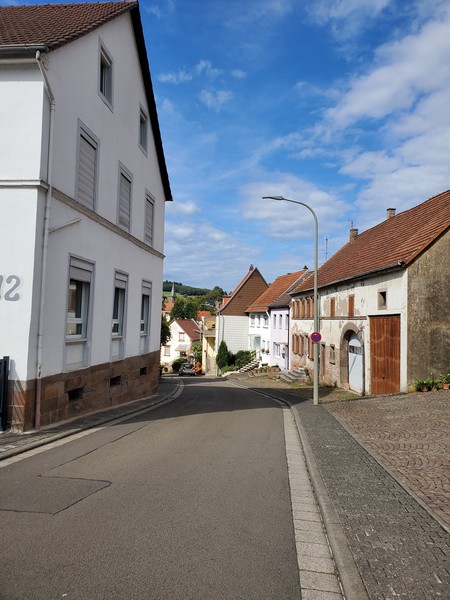
Rammelsbach
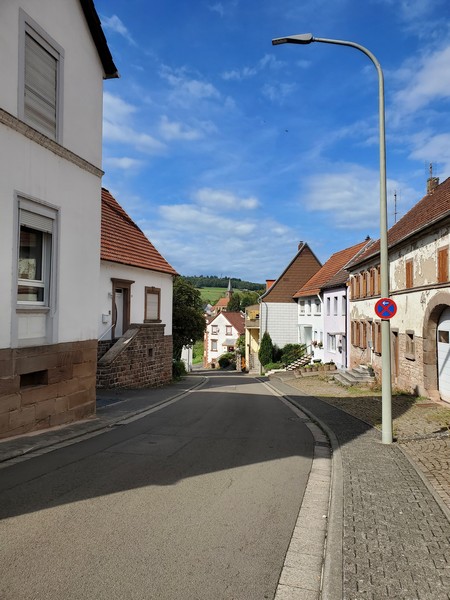
Rammelsbach
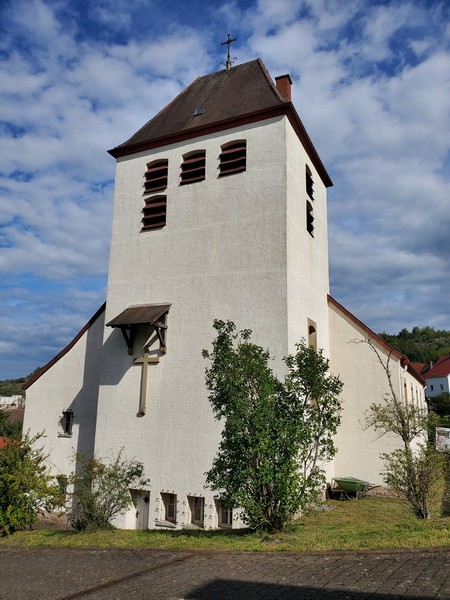
Protestant church built in 1954. As best I can tell there were no churches in Rammelsbach when Julius lived there. There were separate schools for Protestants and Catholics.
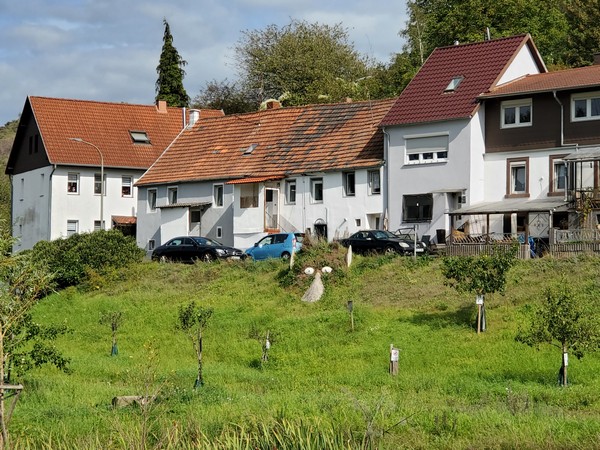
These are probably some of the oldest houses in town.
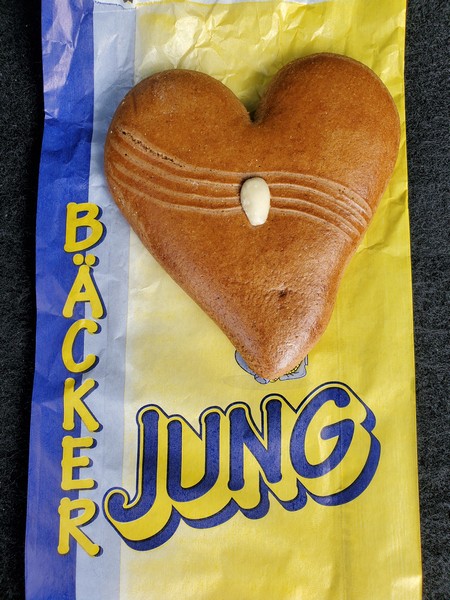
Gingerbread heart from the local bakery.
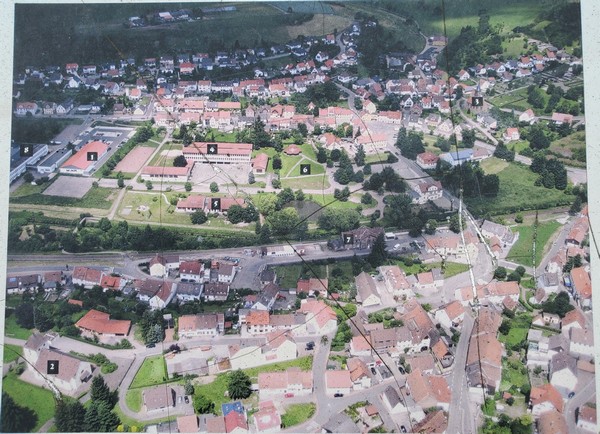
Rammelsbach in 2014. The railroad station is #7.
Gottschee, Slovenia
Pauline Erschen was born in 1878 in Grafenfeld, Austria (now Dolga Vas, Slovenia), in the area called Gottschee (GO chay), a former German-speaking region in what was then the Habsburg Empire, and is now Slovenia. Germans from Tyrol and Carinthia first settled in this area around 1330, clearing the vast forests of the region and establishing villages and towns. They maintained their German identity and language during 600 years of isolation. In 1918, Gottschee became part of the new Kingdom of Yugoslavia, and the Gottscheer became an ethnic minority in a large Slavic state. Most of the few who remained at the end of WWII were deported to Germany.
Today Gottschee largely corresponds to the Municipality of Kočevje (Koh CHEH wee uh). The original German settlers of the region are called Gottschee Germans, or Gottscheers, and their German dialect is called Gottschee German, or Gottscheerish. There are only a few speakers left, mostly in New York.
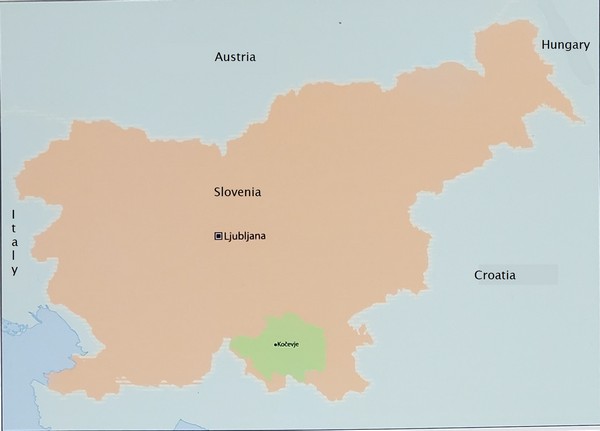
Location of Gottschee (green) in present-day Slovenia
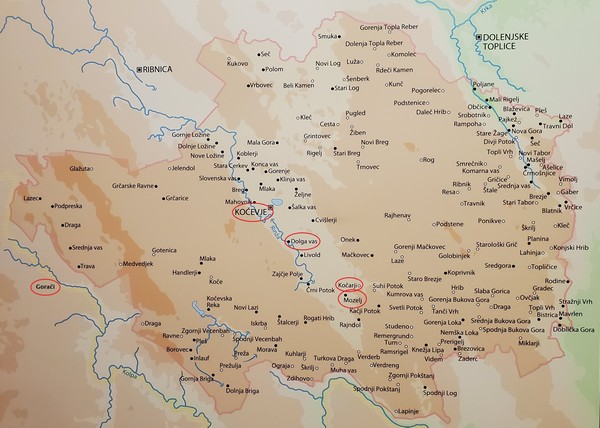
Gottschee (brown outline) with towns circled. Pauline's mother, Magdalena, was also born in Grafenfeld (Dolga Vas), and her father, Ferdinand, was born in Goraci, Croatia, about 80 miles away (but just a few miles from the Gottschee border, so his family was presumably Gottschee). Around 1892, the family moved five miles to Nidermösel (now Kocarji, Kočevje, Slovenia). Pauline, the oldest child, was about 14.
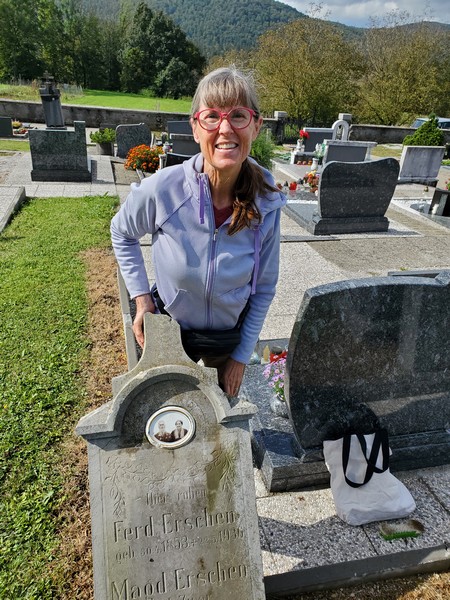
Ferdinand and Magdalena are buried in the Mozelj (MO zul) cemetery (one mile from Nidermösel). Pauline died in 1929 (aged 74) and Ferdinand in 1936 (aged 83). My guess is that their children (all living in America) paid for the monument.
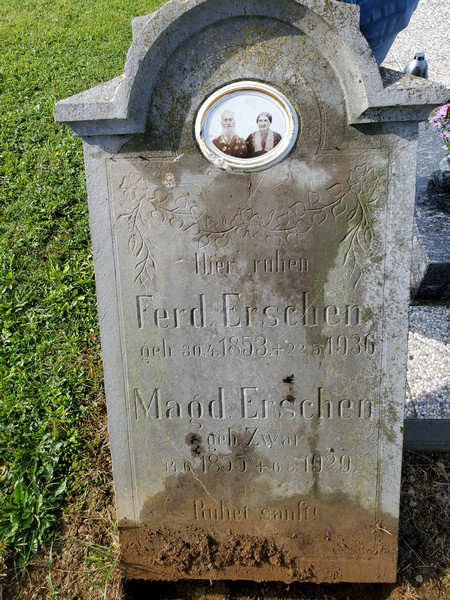
Ferdinand and Magdalena's headstone includes a ceramic photo of them, still in good condition.
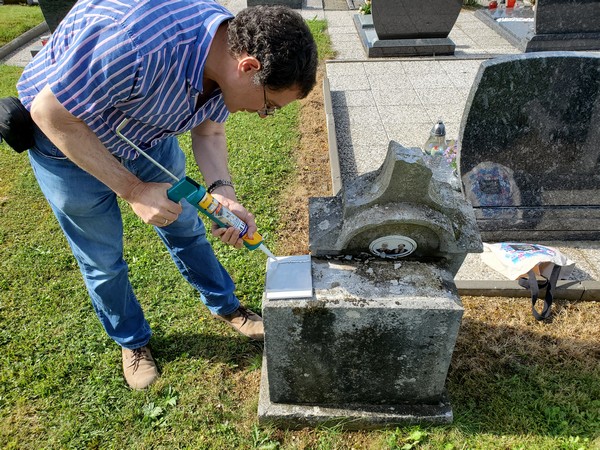
Karen's friend Donald applying epoxy to the plaque Karen purchased locally (with Donald's logistical help). Donald is an American linguist/historian/translator/professor who lives in Slovenia with his wife and daughters.
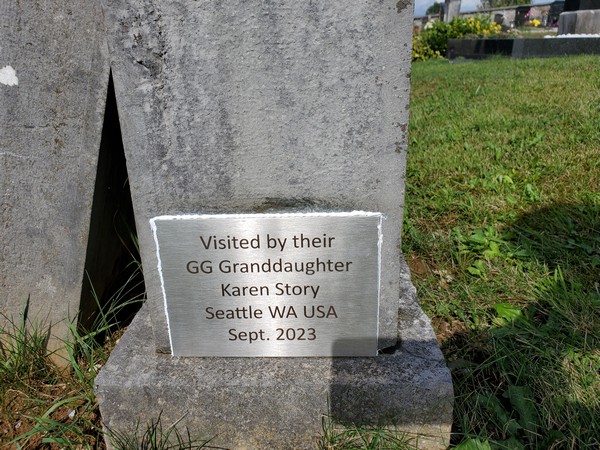
The 5x7" plaque lets people know that someone still cares about the grave, and will hopefully help interested parties to find Karen online.
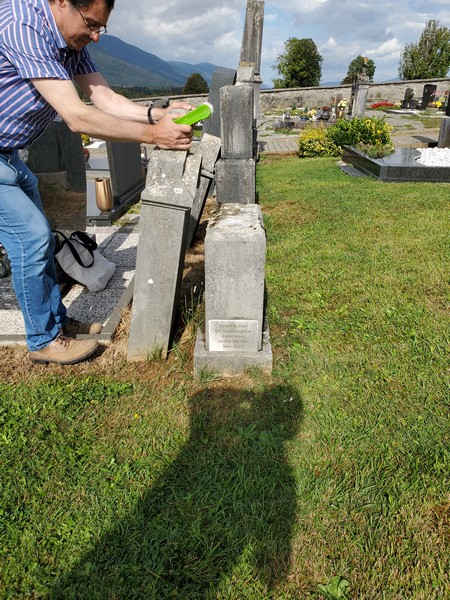
The headstone fell off the plinth years ago, but this has protected the engraving and ceramic photo from the elements.
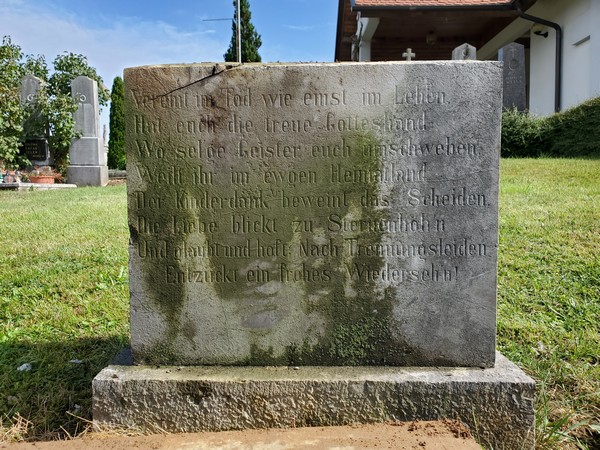
The plinth. German: Vereint im Tod wie einst im Leben Hat euch die treue Gotteshand Wo sel'ge Geister euch umschweben. Weilt ihr im ew'gen Heimatland. Der Kinderdank beweint das Scheiden Die Liebe blickt zu Sternenhöh'n Und glaubt und hoft Nach Trennungsleiden Entzückt ein frohes Wiederseh'n!
English: United in death as you once were in life The faithful hand of God holds you Where blessed spirits float around you. You reside in the eternal homeland. Your grateful children weep at this parting Their love looks to the starry heights And believes and hopes, after the sorrow of separation, With joy in a happy reunion!
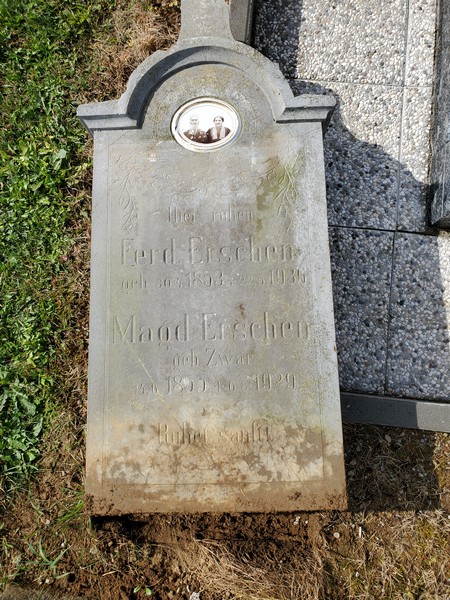
The stone after brushing off dirt. At the top it says, "Here rest," and at the bottom, "rest in peace."
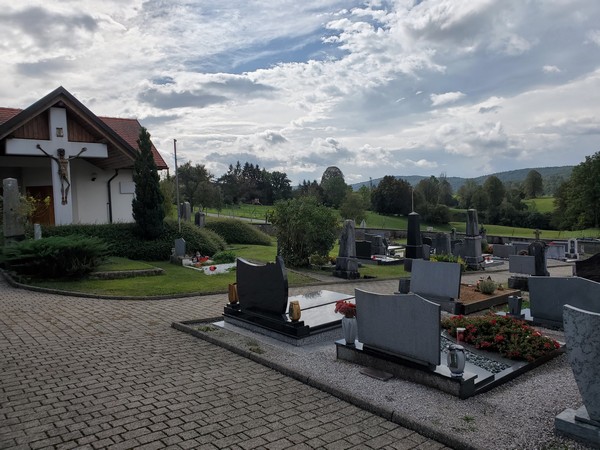
There are 12 German graves in the Mozelj graveyard; the rest are Slovenian from after WWII. The Yugoslavs destroyed as many German graves as they could, so we are lucky that ours survived. (Perhaps they knocked the stone off the plinth?)

The Erschen grave is on the right, with the fallen stone facing backwards.
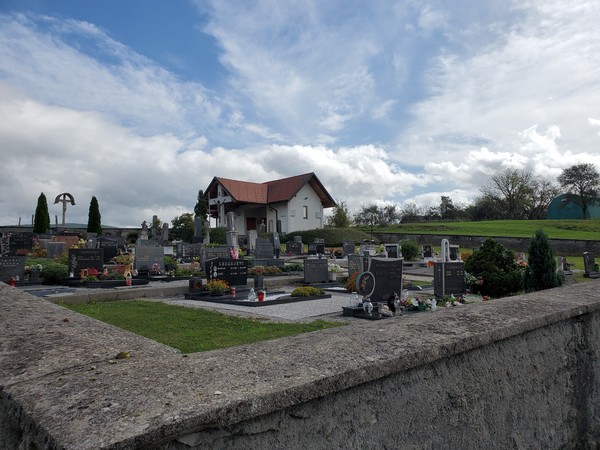
The Mozelj cemetery
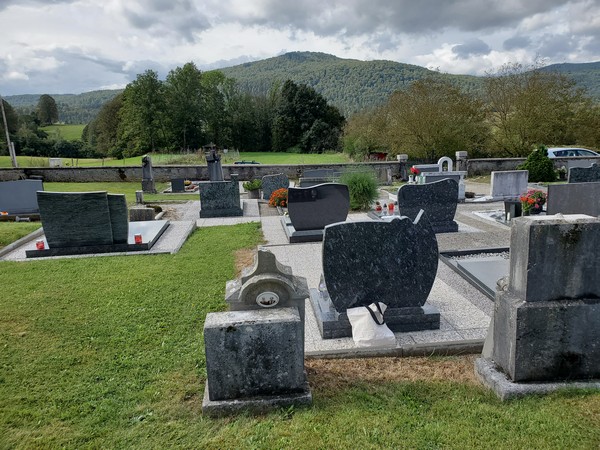
The cemetery is in a beautiful setting, out in the country.
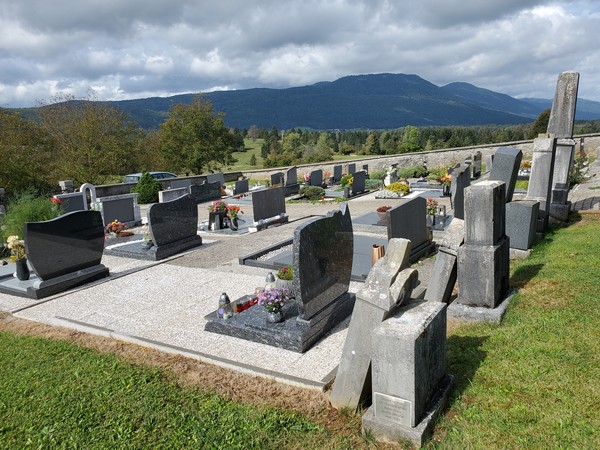
View from the cemetery.
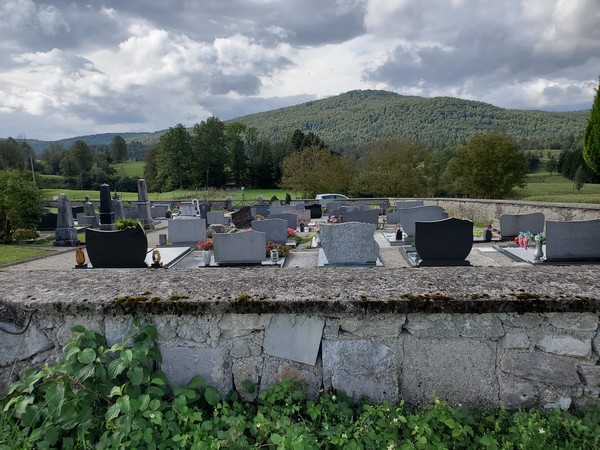
View from Mozelj cemetery. Some of the square stones in the wall are German headstones destroyed by the Yugoslavs and used to build the wall.
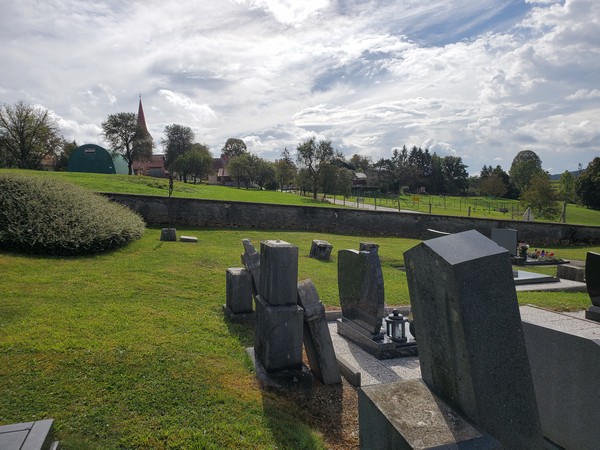
The town of Mozelj and the steeple of St. Leonard's church. The Erschen headstone is visible in the center of the photo.
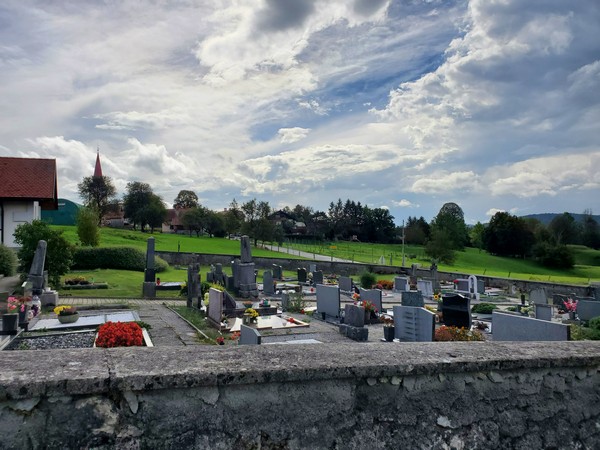
View of Mozelj from the cemetery
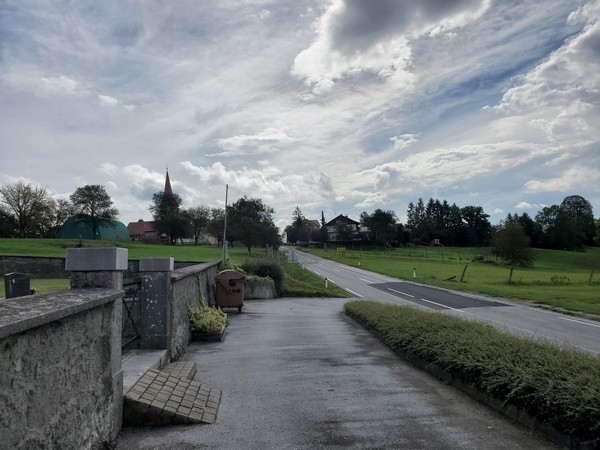
Cemetery entrance and road into town
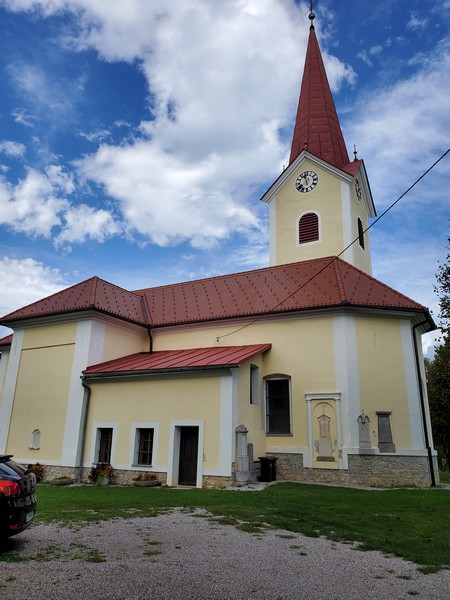
Exterior of St. Leonard's church, Mozelj (undoubtedly where the Erschen family attended.
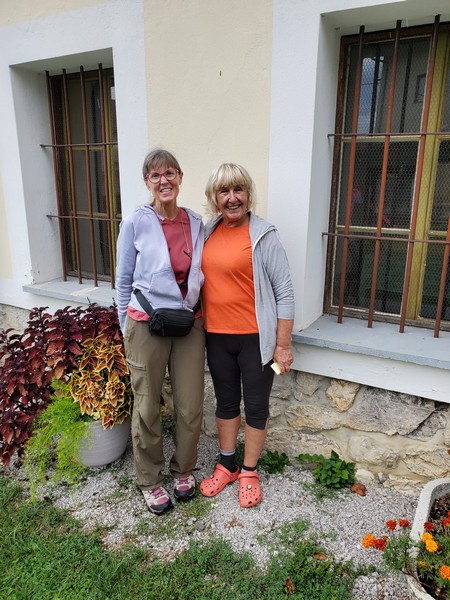
Dragica (pron. Dragitsa) helps care for the church, and gave us a tour.
Short video of church and Dragica speaking Slovenian. Opens a new window; close the window when you're done.
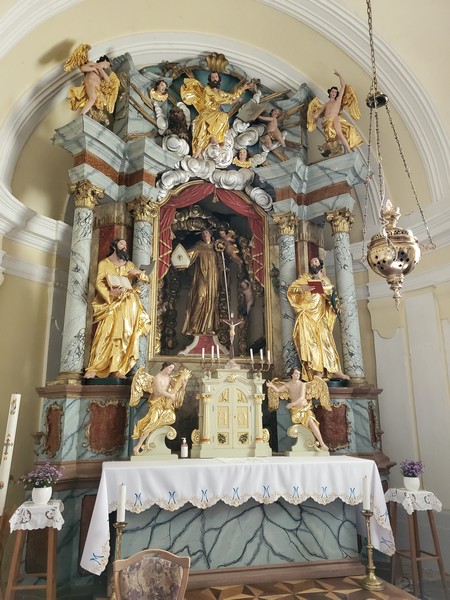
High altar from 1764 depicts St. Leonard with a bishop's miter.
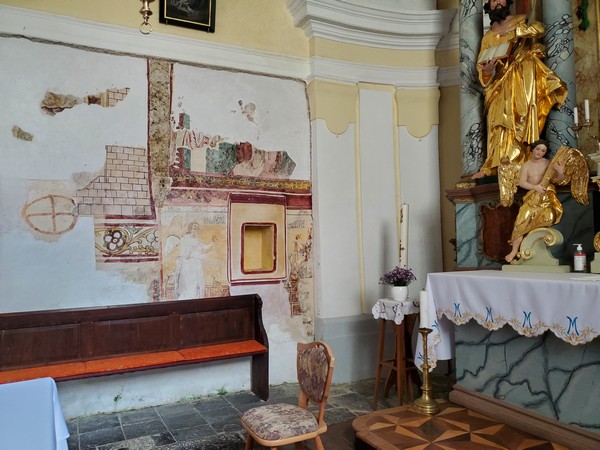
Wall fresco in St. Leonard's church.
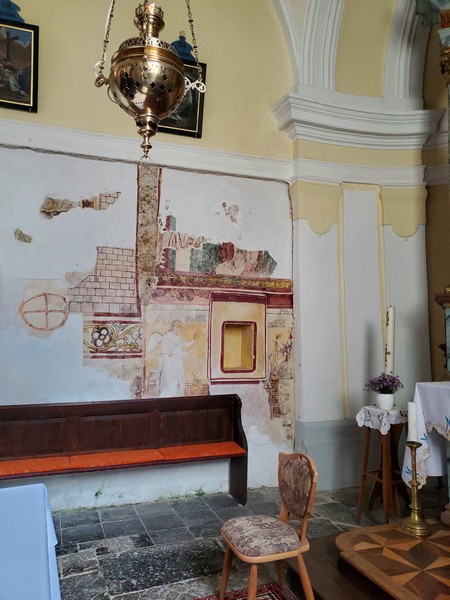
Frescoes and hanging censer
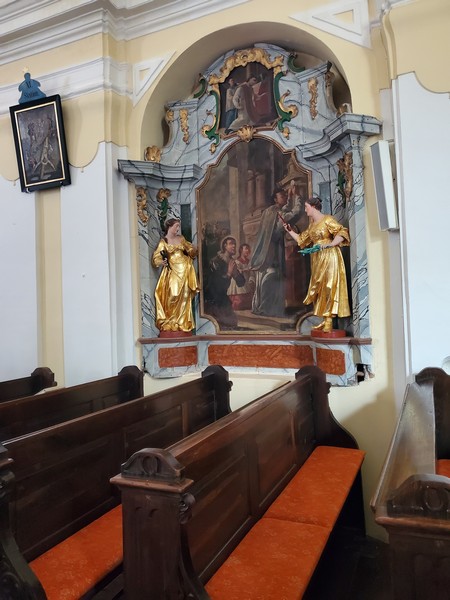
St. Leonard's church
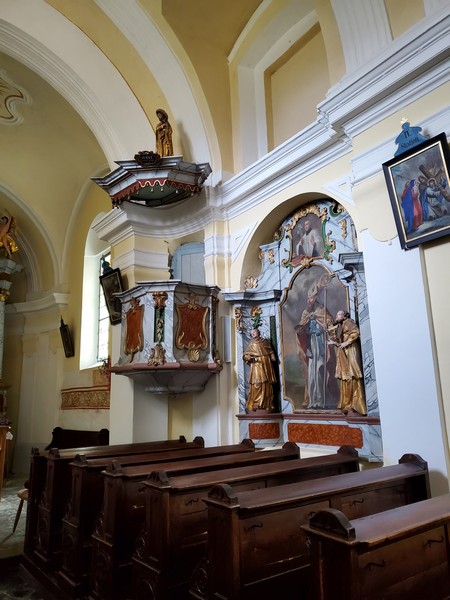
St. Leonard's church
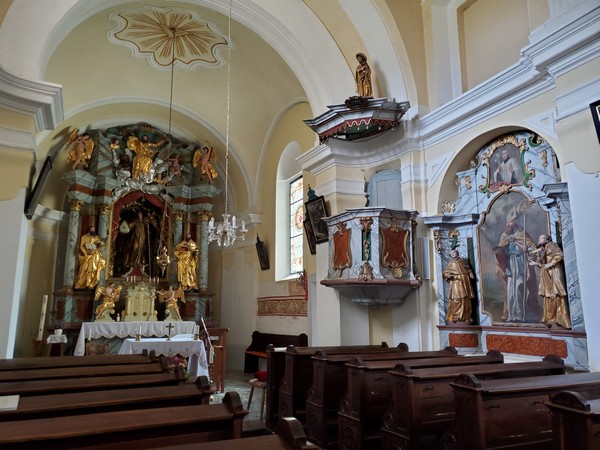
St. Leonard's church
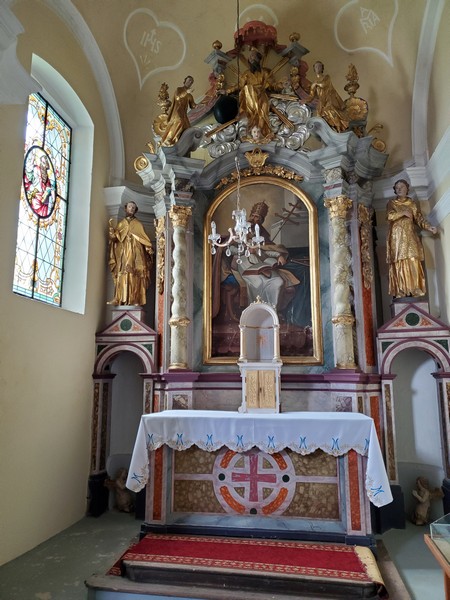
St. Leonard's church
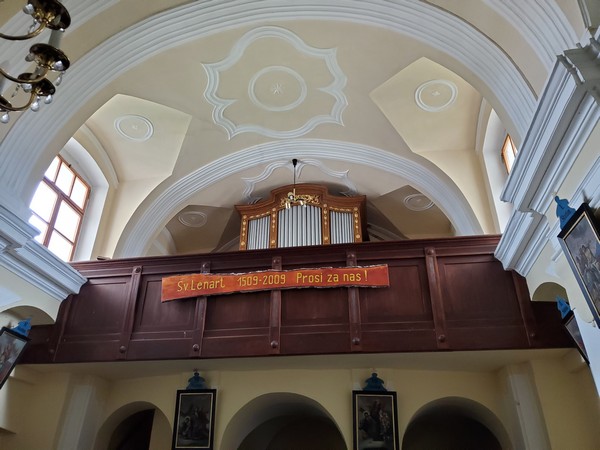
The church was founded in 1509. The banner says "St. Leonard, pray for us!"
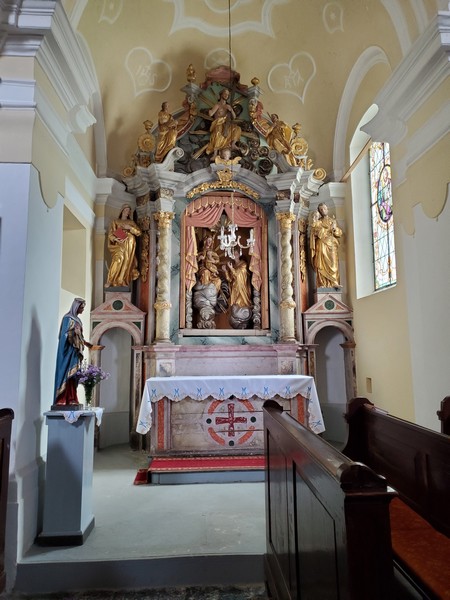
St. Leonard's church
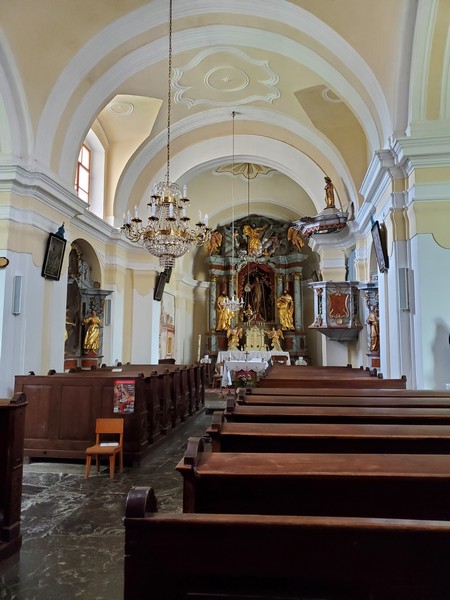
St. Leonard's church
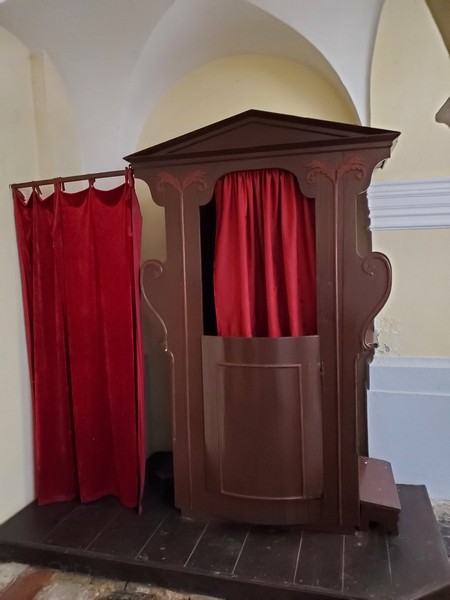
St. Leonard's church
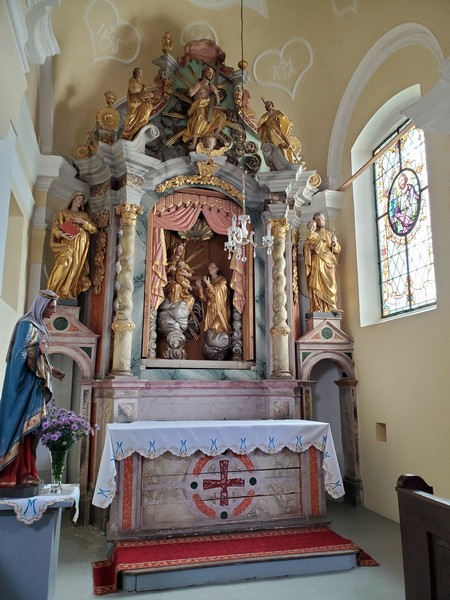
St. Leonard's church
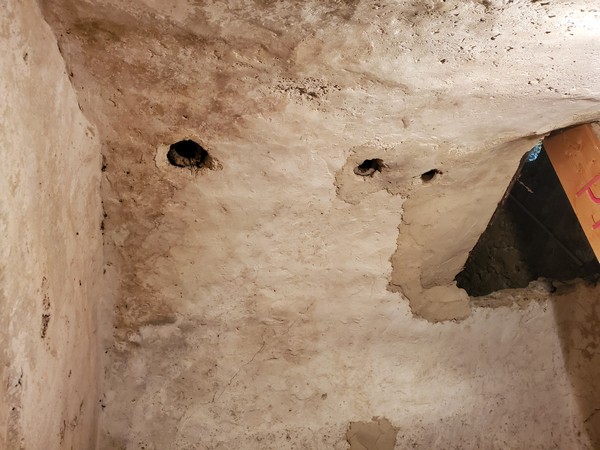
Holes for the old bell ropes

The stone floor is probably original.
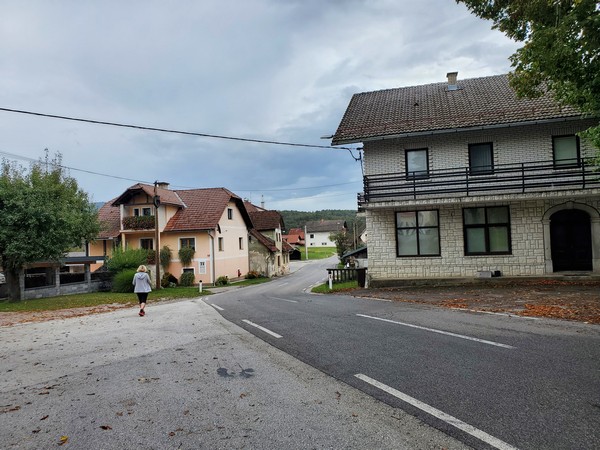
Dragica walking back to her house in Mozelj.
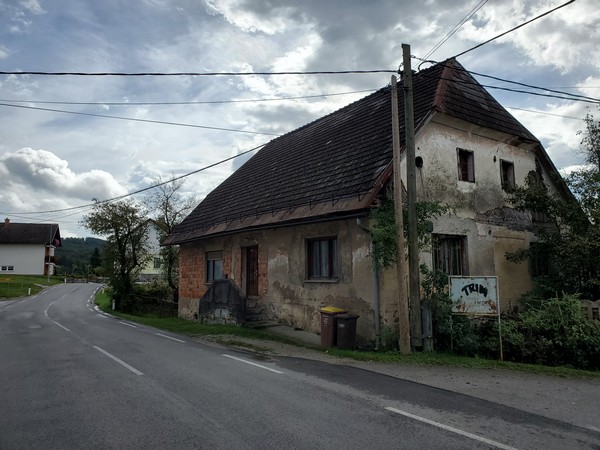
Old house in Mozelj
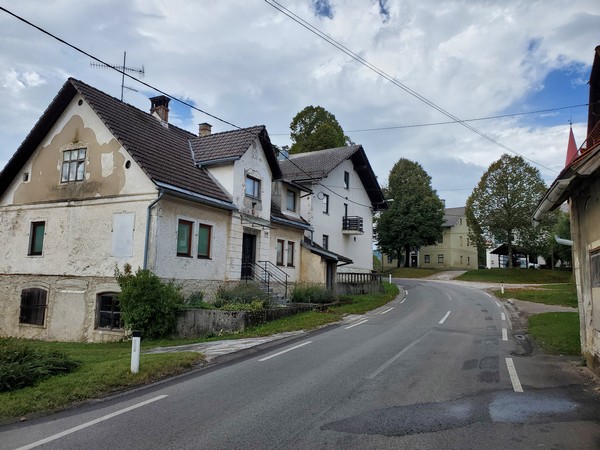
Old houses in Mozelj

Old house in Mozelj
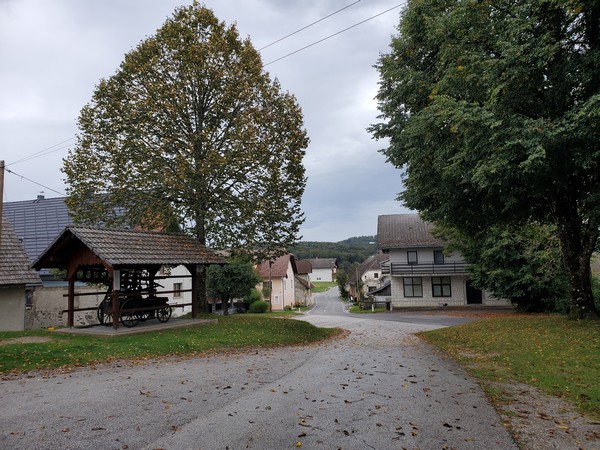
In 2002 the population of Mozelj was 184.
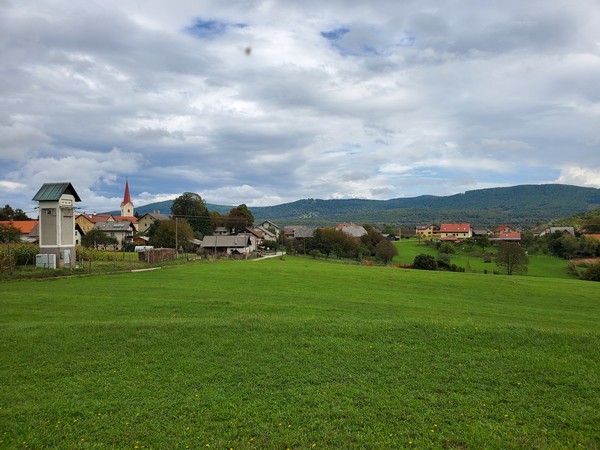
Mozelj, Slovenia. When the Gottscheers first came here in the 1300s, the area was densely forested.
Town of Kočevje
Kočevje is the name of a municipality and of its main town. Kočevje is the largest town in the area, and the center of the former Gottschee. It's six miles from Mozelj. The area is a place of pilgrimage for Gottscheer descendants. Kočevje has a museum of Gottschee culture.
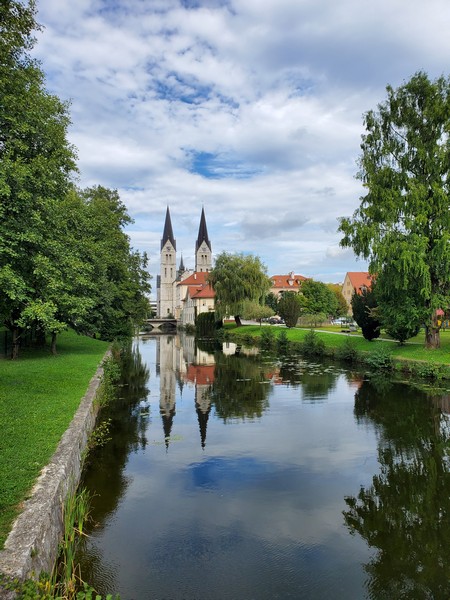
Kočevje church and river
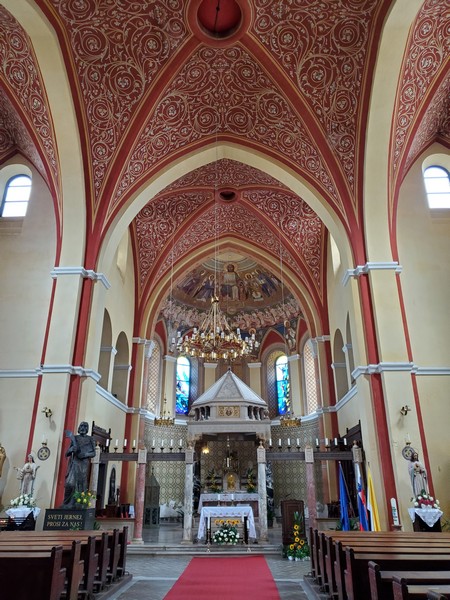
Interior Kočevje church
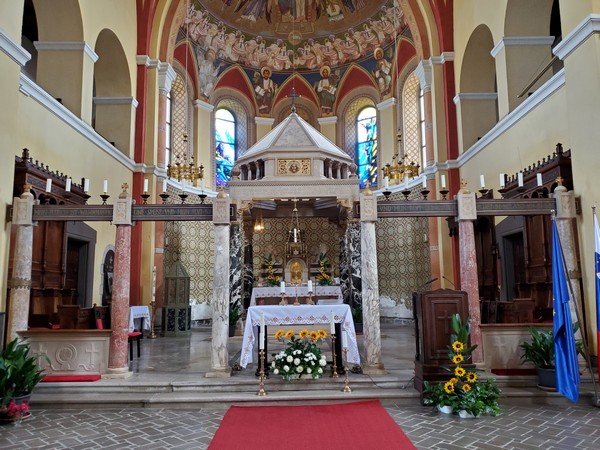
Interior Kočevje church. It's one of the few churches in the area that still has German inscriptions.
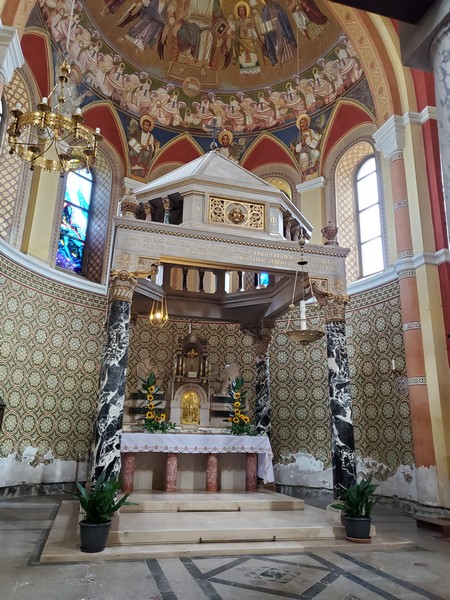
Interior Kočevje church
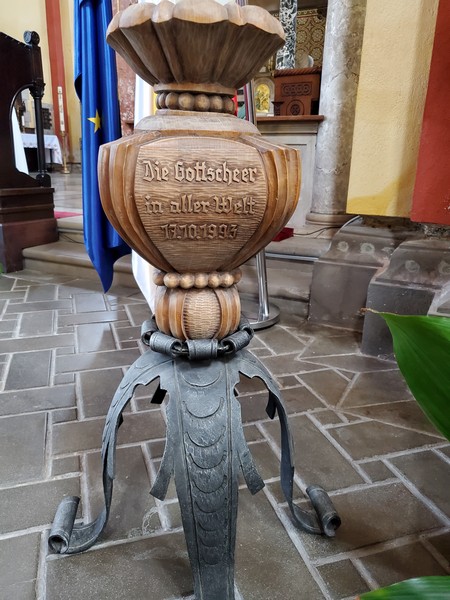
A gift from "The Gottscheer all over the world" on Oct. 17, 1993.
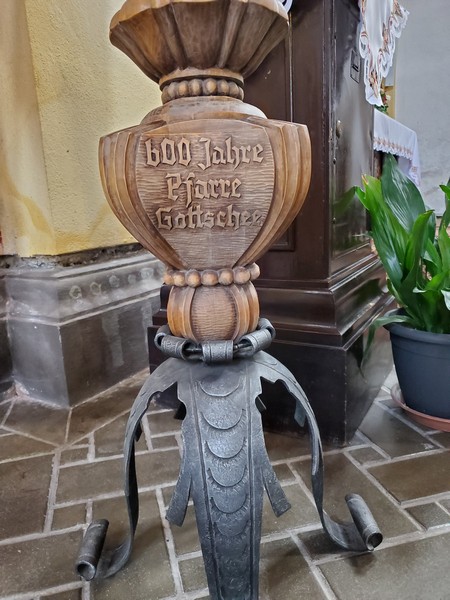
To celebrate the 600-year anniversary of the parish.
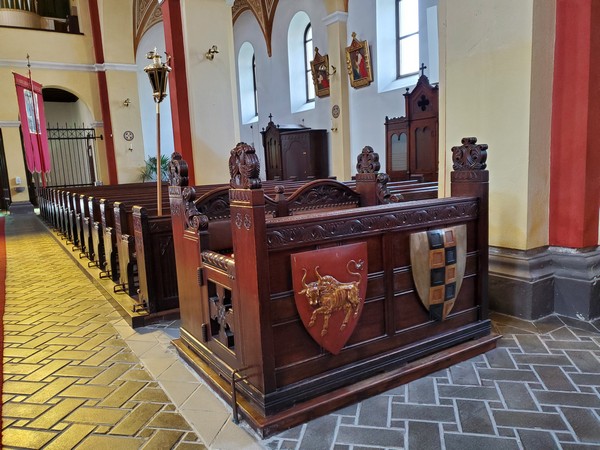
Pew reserved for the King
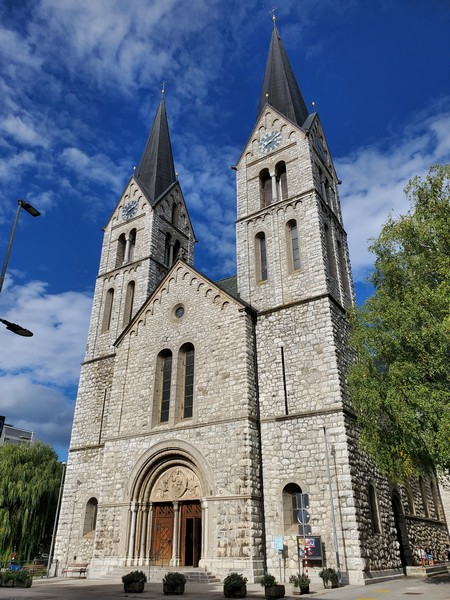
Front of the Kočevje church
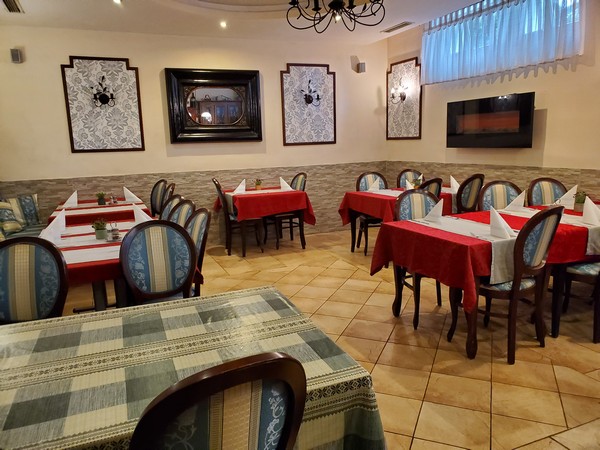
Donald suggested lunch at the Veronika guesthouse and restaurant in the town of Kočevje.
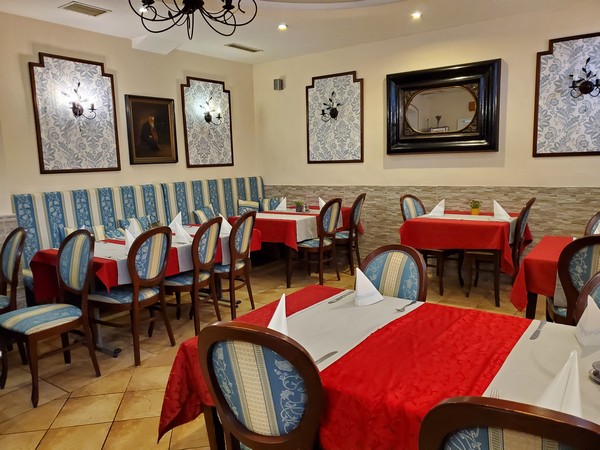
Veronika guesthouse and restaurant
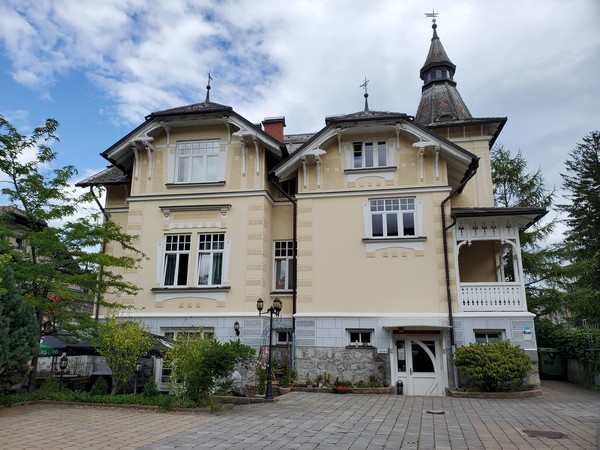
Veronika guesthouse and restaurant
Gottschee History Museum in Kočevje
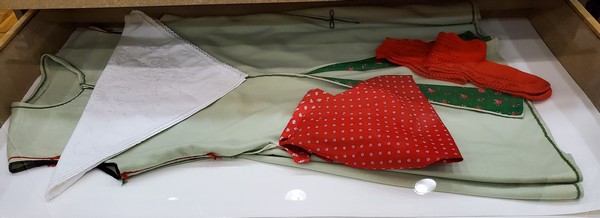
Dress
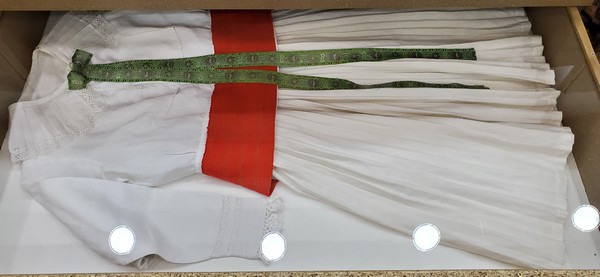
Dress
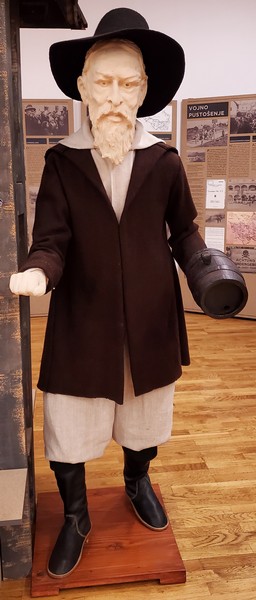
Men's everyday dress
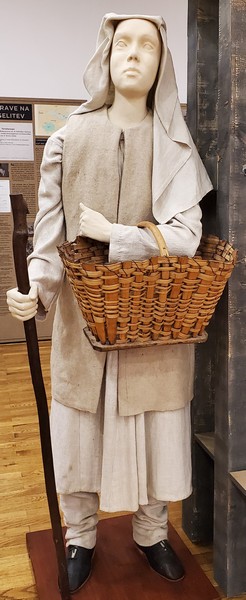
Women's everyday dress
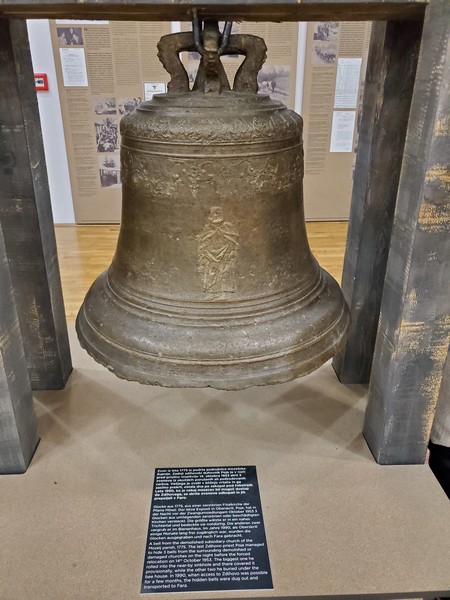
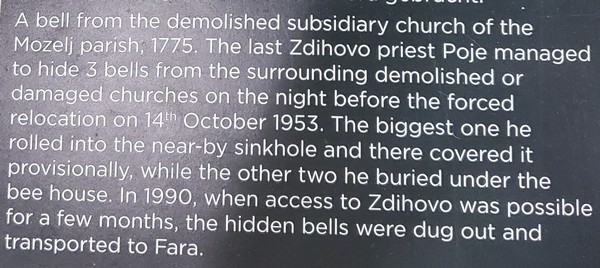
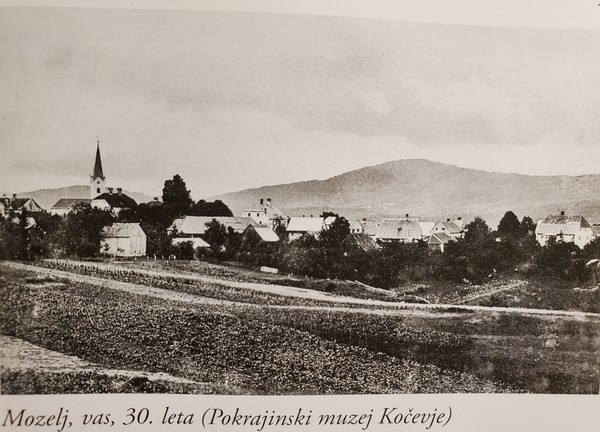
Mozelj in the 1930s
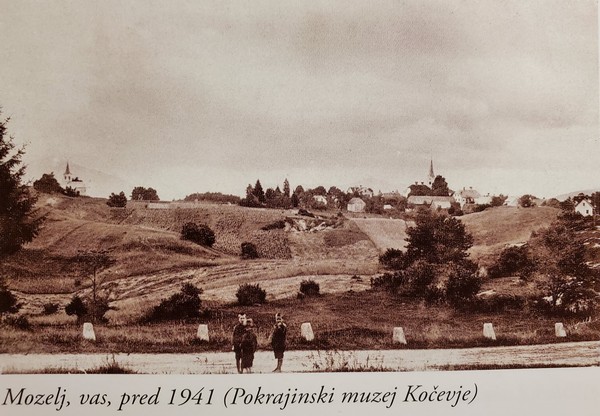
Mozelj before 1941
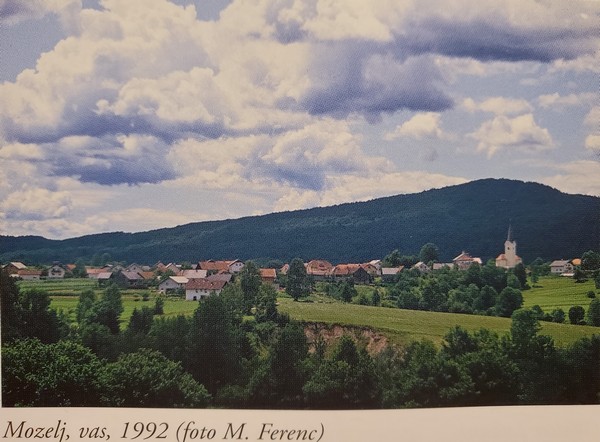
Mozelj 1992
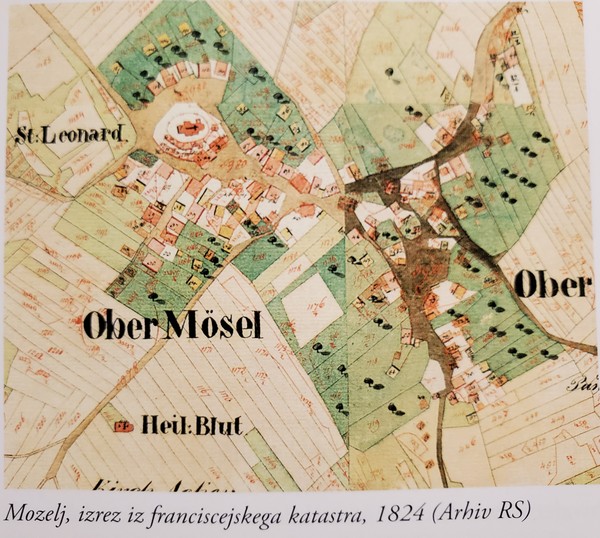
Mozelj landholdings, 1824
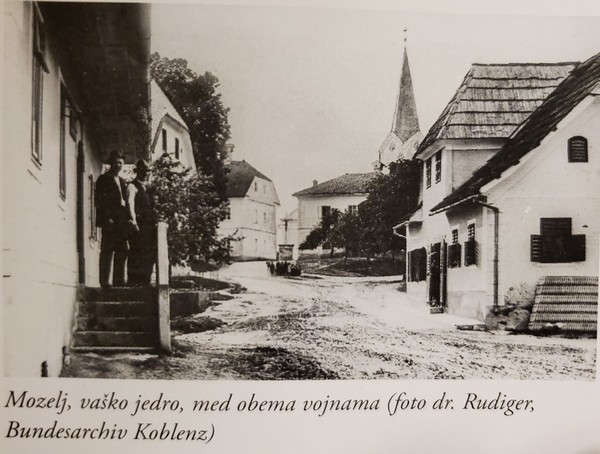
Mozelj between the two wars
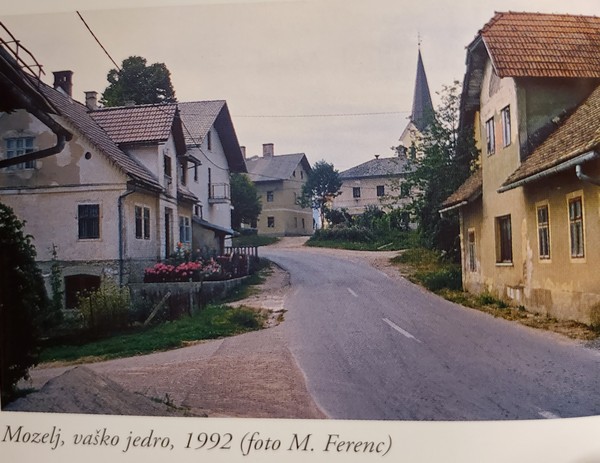
Mozelj 1992
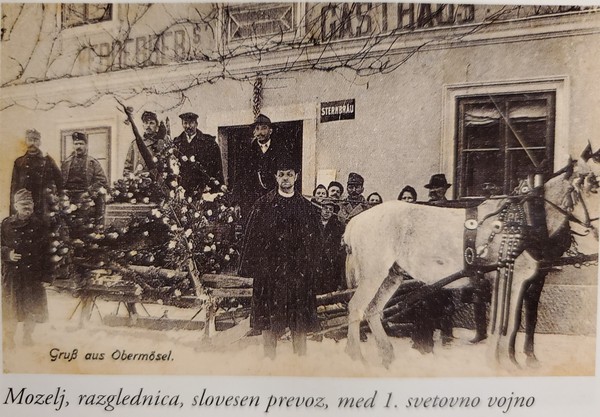
This postcard of a WWI funeral procession says, in German, "Greetings from Obermösel."
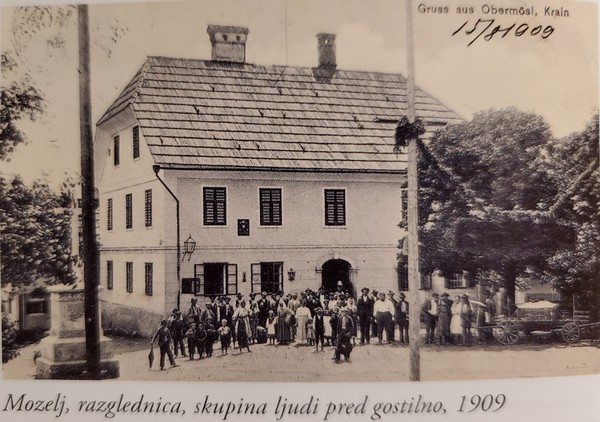
Mozelj 1909. The building is an inn.
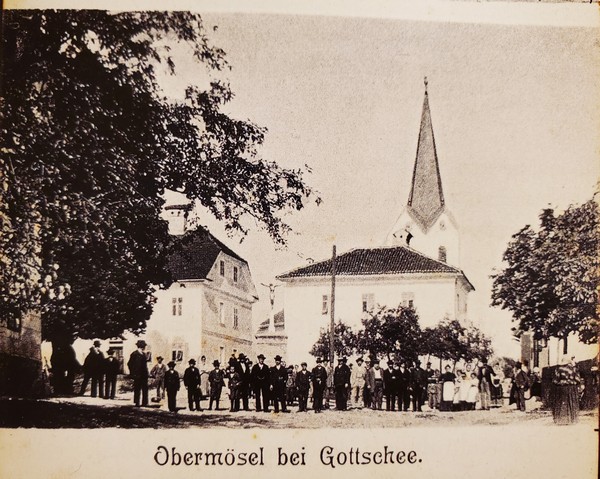
The German title says "Obermösel in Gottschee."
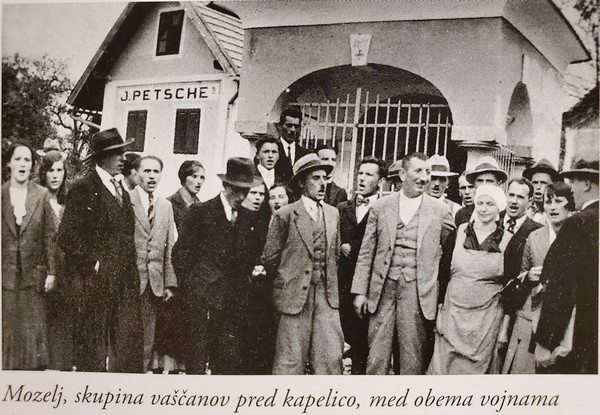
Villagers in front of the chapel between the two wars
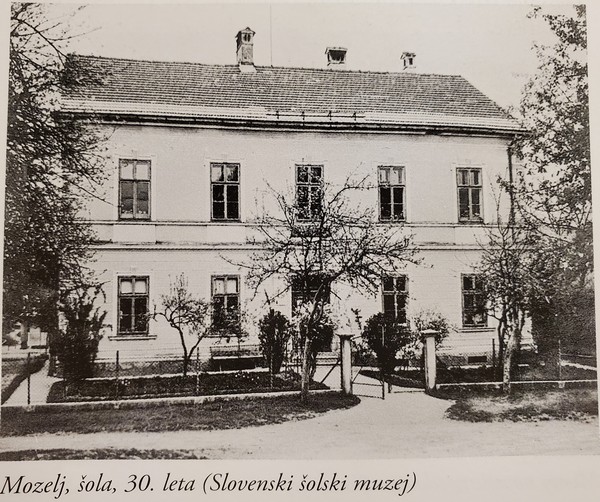
Mozelj school in the 1930s
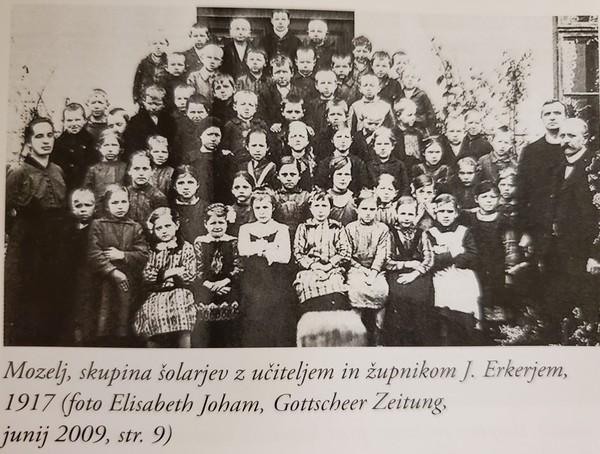
Mozelj students and teachers 1917
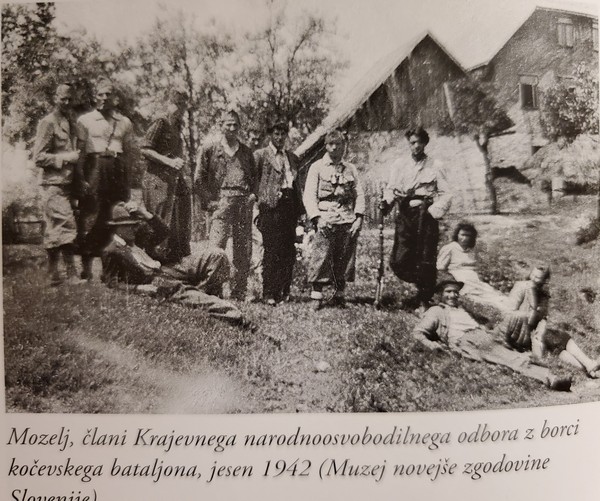
Members of the local national liberation committee with fighters of the Kocev battalion, autumn 1942
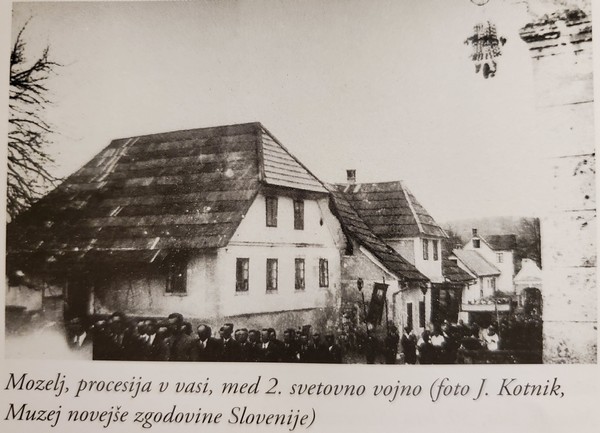
Procession in the village during the Second World War
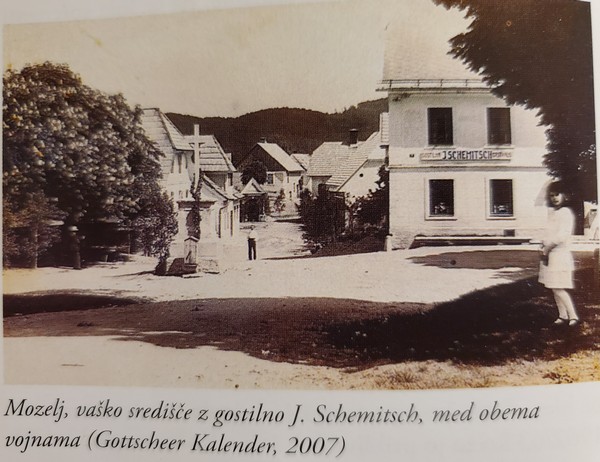
village center with an inn between the two wars

St. Leonard's church 2005
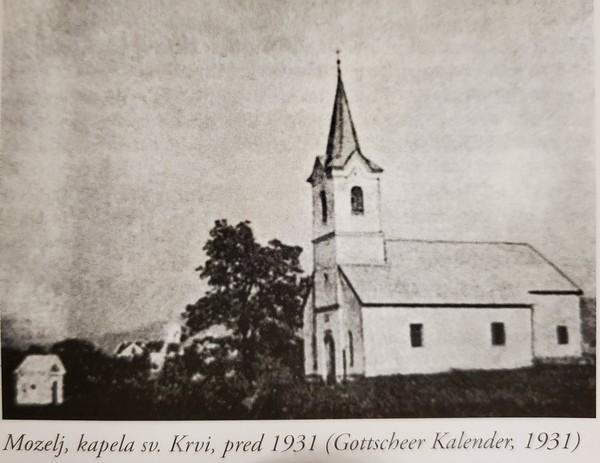
This chapel was destroyed in 1954.
